What if you you could scoop up a jar of seawater and use it to figure out what species were in that part of the ocean? Today we’re able to do that with a new scientific technique analyzing environmental DNA, or eDNA for short. In this episode, we talk to Ryan Kelly, an ecologist and lawyer at the forefront of eDNA research, about the technique itself, how it’s changing what we can learn about the ocean, and how that might impact policy.
Thanksgiving: From the Outside Looking In
From Syracuse University Broadcast Journalism | 05:52
Thanksgiving is the favorite holiday for many Americans, but what is it like for those who are from other countries and celebrate it too? This piece gives you a glimpse of how special American Thanksgiving is to foreigners.
 Thanksgiving is the favorite holiday for many Americans, but what is it like for those who are from other countries and celebrate it too? This piece gives you a glimpse of how special American Thanksgiving is to foreigners.
Thanksgiving is the favorite holiday for many Americans, but what is it like for those who are from other countries and celebrate it too? This piece gives you a glimpse of how special American Thanksgiving is to foreigners.
Music and Noise
From Sheila Cowley | Part of the Sound and Violence - Work by NYU Students series | 11:00
Music-induced hearing loss and the shifting borders between noise and music.
- Playing
- Music and Noise
- From
- Sheila Cowley
 Hearing loss, tinnitus, iPods and earbuds are just part of the shifting borders between noise and music. In this sonically-complex piece, Joshua Hudelson explores the seductive dangers of what is now called "music-induced hearing loss."
Hearing loss, tinnitus, iPods and earbuds are just part of the shifting borders between noise and music. In this sonically-complex piece, Joshua Hudelson explores the seductive dangers of what is now called "music-induced hearing loss."
Trauma Glossolalia: Synesthesia and Sound
From Sheila Cowley | Part of the Sound and Violence - Work by NYU Students series | 10:09
Award-winning composer Jenny Olivia Johnson explores synesthesia, where sound is perceived as color or touch. Her feature is a work of sound art as well as a compelling look at traumatic memories involving sound.
- Playing
- Trauma Glossolalia: Synesthesia and Sound
- From
- Sheila Cowley

Spoken Editions #205: Pigments, Vibrations, and Seismographic Bebop
From Teosson Wells | 08:01
Free, audio book excerpt. “Color is a power which directly influences the soul,” wrote Vasily Kandinsky, the Russian painter and theorist credited with creating the first entirely abstract painting over one hundred years ago.
 Like other noted artists, from Vincent Van Gogh to Duke Ellington, Kandinsky had synesthesia—a neurological phenomenon that manifests by blending the senses. Some people with synesthesia experience certain colors in sound. Others, like Kandinsky, experience the reverse—they hear music and see it in color. Although the phenomenon varies from person to person, one thing remains constant—the synesthete experiences the world like very few others do—and this cross wiring of the senses sometimes makes for the creation of some extremely interesting art.
Like other noted artists, from Vincent Van Gogh to Duke Ellington, Kandinsky had synesthesia—a neurological phenomenon that manifests by blending the senses. Some people with synesthesia experience certain colors in sound. Others, like Kandinsky, experience the reverse—they hear music and see it in color. Although the phenomenon varies from person to person, one thing remains constant—the synesthete experiences the world like very few others do—and this cross wiring of the senses sometimes makes for the creation of some extremely interesting art.
You Are How You Sound
From Hold That Thought | Part of the On Language series | 12:31
How may speech affect your perceived level of intelligence? Dr. John Baugh describes research that sheds light on linguistic profiling.
- Playing
- You Are How You Sound
- From
- Hold That Thought
Imagine that you're walking down the street and hear someone speaking with a British accent. What assumptions might you make about that person based on his or her voice? Would you come to the same conclusion if that person had a heavy southern drawl or sounded like he or she spoke Spanish as a first language? John Baugh , the Margaret Bush Wilson Professor in Arts & Sciences at Washington University in St. Louis, continues his discussion of linguistic profiling and describes how he hopes his research will lead to policies that increase Americans' acceptance of linguistic diversity. To hear Baugh's personal story about how first became interested in this line of research, be sure to listen to Linguistic Insights , the first episode in our ongoing series about language.
The Music of Conversation
From Hold That Thought | 12:30
Even casual conversations have surprisingly musical qualities. Linguist Brett Hyde delves into the rhythms behind language and the principles that organize these patterns.
- Playing
- The Music of Conversation
- From
- Hold That Thought
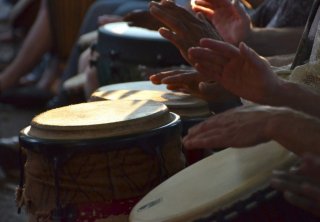 Whether or not you can play the drums or keep your body in rhythm out on the dance floor, if you're reading this sentence, you're participating in the unheard music of language. In his research at Washington University in St. Louis, linguist Brett Hyde , assistant professor of philosophy, delves into the rhythms behind everyday conversation. By studying the accent patterns of languages around the world, Hyde's goal is to discover the underlying principles that organize these patterns. Feel free to clap along as you hear about the connections between music, poetry, and the distinct beats of every sentence ever spoken.
Whether or not you can play the drums or keep your body in rhythm out on the dance floor, if you're reading this sentence, you're participating in the unheard music of language. In his research at Washington University in St. Louis, linguist Brett Hyde , assistant professor of philosophy, delves into the rhythms behind everyday conversation. By studying the accent patterns of languages around the world, Hyde's goal is to discover the underlying principles that organize these patterns. Feel free to clap along as you hear about the connections between music, poetry, and the distinct beats of every sentence ever spoken.
#66 - Sit With Me
From SALTcast Podcast | 11:13
How can StoryCorps take their features to the next level? This Saltcast offers one example.
- Playing
- #66 - Sit With Me
- From
- SALTcast Podcast

I hope you're sitting down. I'm going to say something heretical. Ready?
I'm kinda tired of StoryCorps.
Let me explain. On so many levels, StoryCorps is genius. It's the nation's largest oral history project -- ever. And, it's peer to peer (mostly) with people interviewing one another. The stories are heartfelt and honest. What could be better on the radio, right?
Problem is, I think the stories are predictable. Not all the time, to be sure, but often.
On this Saltcast, we listen to a story produced at Salt several years ago that, in-house, we called "StoryCorps Plus." Take a listen and let us know if you think the approach to recording and producing this story might be a way for StoryCorps to take their productions to the next level.
# 74 - A Square Meal Regardless
From SALTcast Podcast | 10:15
How the heck do you find a story?! Check out a yard sale.
- Playing
- # 74 - A Square Meal Regardless
- From
- SALTcast Podcast

“How the heck am I going to find a story?!” Students at Salt ask that question incessantly at the beginning of a semester. And trust me, they don’t always say ‘heck.’
To spark thinking on where to look for a story, for many years we’ve used “50 Places to Shop for Story Ideas” by Gregg McLachlan. I think it’s an excellent starting point.
One thing missing from the list? Yard sales.
Student Jen Nathan found today’s story, “A Square Meal Regardless,” while thumbing through the classified section of a newspaper (which is on the list, by the way).
Have a listen, check out the list, then add number 51 — yard sales.
StoryCorps: Alicia Beltrán-Castañeda and Serena Castañeda
From StoryCorps | Part of the StoryCorps series | 01:49
A mother tells her daughter about growing up in California in the late 1960s, and the lesson learned after her mother gave her beloved bed away.

Alicia Beltrán-Castañeda grew up in Salinas, California, in the late 1960s. Her mother, Beatriz Béltran, was an immigrant from Mexico, and her father, Manuel, worked both as a foreman at a food packing plant and as an overseer of migrant farm workers.
Their family of seven lived in a small trailer, but by working multiple jobs, Manuel was able to save enough money to buy a plot of land on which he built a house. Alicia vividly recalls sitting on a 1950s metal stool in their living room, watching her father paint some of the walls goldenrod, and others Pepto-Bismol pink.
Manuel died when Alicia was 13, leaving their mother to raise the children alone.
Beatriz began working for the Salinas City Elementary School District as a bilingual liaison for Spanish-speaking families and the administration, and later became a coordinator for migrant worker families. Through her job, she saw the poverty many migrant families lived in.
Alicia was not as familiar with the lives of migrant farmworkers until she came home one day to find that her bed was missing--she was furious. With all of her older siblings away at college, Alicia had finally gotten her own room, and she loved her bed, which had a pink cover and lace dust ruffle. When she confronted her mother, Beatriz explained that she had given the bed to a family that had recently arrived in California from Mexico, and Alicia remembers telling her mother that she did not understanding why that was her problem. Without explanation, Beatriz told her to fill shopping bags with canned food from their pantry.
Together they drove to a house where Alicia’s bed now was, a one-room shack with a dirt floor like the ones occupied by so many other migrant worker families. There they met a woman who was laying on Alicia’s bed with her newborn baby surrounded by her four other children.
At StoryCorps, Alicia told her own daughter, Serena, 13, how meaningful that experience was for her.
Originally aired November 18, 2016, on NPR’s Morning Edition.
Brightening the Shadows of Dementia
From With Good Reason | Part of the news features series | 03:20
As we approach the shortest days of the year, we take a longing look at the therapeutic aspects of daylight. One researcher found that light therapy dramatically improved symptoms in patients with dementia.
- Playing
- Brightening the Shadows of Dementia
- From
- With Good Reason
 As we approach the shortest days of the year, we take a longing look at the therapeutic aspects of daylight. One researcher found that light therapy dramatically improved symptoms in patients with dementia.
As we approach the shortest days of the year, we take a longing look at the therapeutic aspects of daylight. One researcher found that light therapy dramatically improved symptoms in patients with dementia.
Episode 1: We Are Stardust
From PRX | Part of the Transistor series | 16:20
We're closer than ever before to discovering if we're not alone in the universe. The host for this episode of Transistor, astrophysicist Michelle Thaller, visits the NASA lab that discovered that comets contain some of the very same chemical elements that we contain. Then, Michelle talks to a Vatican planetary scientist about how science and religion can meet on the topic of life beyond Earth.
- Playing
- Episode 1: We Are Stardust
- From
- PRX
 We're closer than ever before to discovering if we're not alone in the universe. The host for this episode of Transistor, astrophysicist Michelle Thaller, visits the NASA lab that discovered that comets contain some of the very same chemical elements that we contain. Then, Michelle talks to a Vatican planetary scientist about how science and religion can meet on the topic of life beyond Earth.
We're closer than ever before to discovering if we're not alone in the universe. The host for this episode of Transistor, astrophysicist Michelle Thaller, visits the NASA lab that discovered that comets contain some of the very same chemical elements that we contain. Then, Michelle talks to a Vatican planetary scientist about how science and religion can meet on the topic of life beyond Earth.
Episode 13: Bigfoot
From Wyoming Public Radio | Part of the HumaNature series | 18:38
For our 13th episode, we venture off the beaten path to hear about Bigfoot and the scientist who’s on a mission to find him.
- Playing
- Episode 13: Bigfoot
- From
- Wyoming Public Radio
 For our 13th episode, we venture off the beaten path to hear about Bigfoot and the scientist who’s on a mission to find him.
For our 13th episode, we venture off the beaten path to hear about Bigfoot and the scientist who’s on a mission to find him.
Episode 11: Hoofprints On The Heart
From Wyoming Public Radio | Part of the HumaNature series | 21:12
This is the story of a love that spans continents. Jon Dunham set out on the longest, toughest walk of his life. But along the way, he met someone who helped carry the weight.
- Playing
- Episode 11: Hoofprints On The Heart
- From
- Wyoming Public Radio
 This is the story of a love that spans continents. Jon Dunham set out on the longest, toughest walk of his life. But along the way, he met someone who helped carry the weight.
This is the story of a love that spans continents. Jon Dunham set out on the longest, toughest walk of his life. But along the way, he met someone who helped carry the weight.
Episode 12: Home On The Waves With A Seafaring Cowboy
From Wyoming Public Radio | Part of the HumaNature series | 19:18
Herb Pownall wanted to see the world. So he boarded a ship bound for Europe…along with 800 cows.
 Herb Pownall wanted to see the world. So he boarded a ship bound for Europe…along with 800 cows.
Herb Pownall wanted to see the world. So he boarded a ship bound for Europe…along with 800 cows.
Glass Ceiling, Ivory Tower (feature)
From With Good Reason | Part of the news features series | 03:48
Women are earning more degrees in higher education than men. So why are there so few women in tenure track or leadership positions in academia?
- Playing
- Glass Ceiling, Ivory Tower (feature)
- From
- With Good Reason
 Women are earning more degrees in higher education than men. So why are there so few women in tenure track or leadership positions in academia?
Women are earning more degrees in higher education than men. So why are there so few women in tenure track or leadership positions in academia?
Susie Ballot: Native Harvest crafter
From Northern Community Radio - KAXE & KBXE, Minnesota | Part of the Call of the Wild series | 07:53
Milt Lee talks with Susie Ballot who works with Native Harvest on the White Earth Indian Reservation, preparing corn in the traditional way to make hominy, a favored dish of the Ojibwe people.

Sound Opinions presents Tony Visconti on David Bowie
From Sound Opinions | Part of the Sound Opinions Specials series | 07:20
Hosts Jim DeRogatis and Greg Kot speak with producer Tony Visconti about his career working with chameleonic rock icon David Bowie. Bowie passed away on January 10, 2016. Visconti discusses meeting Bowie for the first time and the process of recording "Heroes."
 Rock chameleon David Bowie has died at the age of 69. Throughout his long career, one of Bowie's most important collaborators was producer Tony Visconti. Sound Opinions hosts Jim DeRogatis and Greg Kot spoke with Visconti in 2008 about his work with the music icon. He described meeting the 22-year-old David Bowie for the first time in 1969 as well as the 1977 recording of "Heroes."
Rock chameleon David Bowie has died at the age of 69. Throughout his long career, one of Bowie's most important collaborators was producer Tony Visconti. Sound Opinions hosts Jim DeRogatis and Greg Kot spoke with Visconti in 2008 about his work with the music icon. He described meeting the 22-year-old David Bowie for the first time in 1969 as well as the 1977 recording of "Heroes."
Enough with the "War on Christmas"
From KSFR | Part of the Equal Time with Martha Burk series | 02:30
The so-called “War on Christmas” is in full swing. Militant Christians say the well-known evergreen is a Christian symbol for a Christian holiday, and any attempts to ban it are anti-religion political correctness gone mad. On the other side, folks like a complaining Rabbi in New Mexico say Christmas trees leave out holiday celebrations by other faiths.
Turns out, both sides are wrong.
- Playing
- Enough with the "War on Christmas"
- From
- KSFR

Turns out, both sides are wrong.
Rudolfo Anaya Discusses Oral Tradition in Light of His Novel, "Bless Me, Ultima"
From National Endowment for the Arts | Part of the Literary Moments series | :59
Author Rudolfo Anaya discusses the importance of oral tradition in light of his 1972 novel, "Bless Me, Ultima."
 "Bless Me, Ultima" is about a boy much like Anaya, coming-of-age in the open llano of New Mexico.
This Literary Moment is part of the NEA's Big Reads Moments. The Big Read is an NEA program designed to restore reading to the center of American culture by providing citizens with the opportunity to read and discuss a single book within their communities. In 2007, nearly 200 communities nationwide participated in the Big Read, reading one of twelve classic American novels such as "Fahrenheit 451" by Ray Bradbury and "Their Eyes Were Watching God" by Zora Neale Hurston.
"Bless Me, Ultima" is about a boy much like Anaya, coming-of-age in the open llano of New Mexico.
This Literary Moment is part of the NEA's Big Reads Moments. The Big Read is an NEA program designed to restore reading to the center of American culture by providing citizens with the opportunity to read and discuss a single book within their communities. In 2007, nearly 200 communities nationwide participated in the Big Read, reading one of twelve classic American novels such as "Fahrenheit 451" by Ray Bradbury and "Their Eyes Were Watching God" by Zora Neale Hurston.
313-Martian Motherlode
From Albert Grauer | Part of the Travelers In The Night series | 02:00
Using ground penetrating RADAR on the NASA Mars Reconnaissance Orbiter, scientists have discovered an ice deposit on Mars the size of New Mexico.
- Playing
- 313-Martian Motherlode
- From
- Albert Grauer
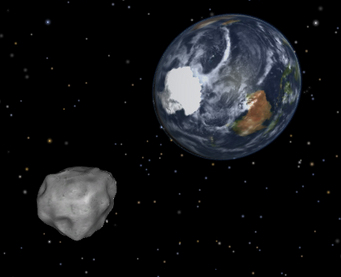 Please see the transcript.
Please see the transcript.
Martin Luther King Jr.'s Secret Advisor
From WNYC | 07:38
The names of many of Reverend Martin Luther King Junior’s associates are well known: Harry Belafonte, Jesse Jackson, Andrew Young. But one of his most important confidants, a Jewish business man from New York named Stanley Levison, has remained largely hidden from public view. From what we know about him, Levison probably would have wanted it that way.
- Playing
- Martin Luther King Jr.'s Secret Advisor
- From
- WNYC
 The names of many of Reverend Martin Luther King Junior’s associates are well known: Harry Belafonte, Jesse Jackson, Andrew Young. But one of his most important confidants, a Jewish business man from New York named Stanley Levison, has remained largely hidden from public view. From what we know about him, Levison probably would have wanted it that way.
The names of many of Reverend Martin Luther King Junior’s associates are well known: Harry Belafonte, Jesse Jackson, Andrew Young. But one of his most important confidants, a Jewish business man from New York named Stanley Levison, has remained largely hidden from public view. From what we know about him, Levison probably would have wanted it that way.
Zoë Buckman on Fight Mode
From Cathy Byrd | Part of the Fresh Art International series | 14:29
Artist Zoë Buckman is in fight mode. Her own boxing gloves figure in recent mixed media installations, spoken word, and sound art projects that defend women's reproductive rights.
- Playing
- Zoë Buckman on Fight Mode
- From
- Cathy Byrd
 Artist Zoë Buckman is in fight mode. Her own boxing gloves figure in recent mixed media installations, spoken word, and sound art projects that defend women's reproductive rights. This episode is an excerpt from the 3 Dec 2016 Fresh Art International show on Untitled, Radio, Miami Beach.
Artist Zoë Buckman is in fight mode. Her own boxing gloves figure in recent mixed media installations, spoken word, and sound art projects that defend women's reproductive rights. This episode is an excerpt from the 3 Dec 2016 Fresh Art International show on Untitled, Radio, Miami Beach.
Sound Editor: Guney Ozsan | Swami Ji spoken word performance audio courtesy Zoë Buckman
Conversations with Julian Bond
From With Good Reason | 53:58
The late Julian Bond conducted 51 extensive interviews with prominent black leaders in America. Phyllis Leffler who led the project with Bond, has written a book on the series that offers insights into the intractable disparities of race in America. And more..
- Playing
- Conversations with Julian Bond
- From
- With Good Reason
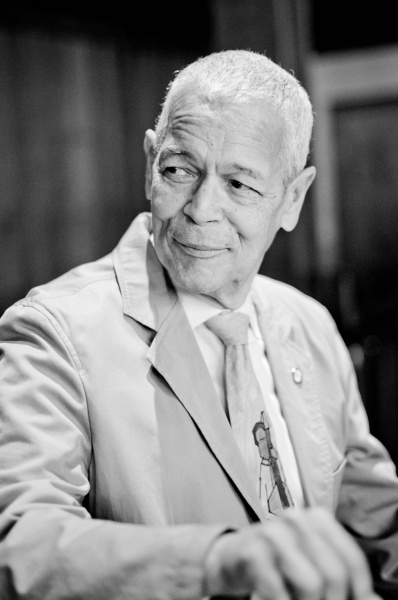
The late Julian Bond conducted 51 extensive interviews with prominent black leaders in America. Phyllis Leffler who led the project with Bond, has written a book on the series that offers insights into the intractable disparities of race in America. Also: In the 1940’s Fatima Massaquoi penned one of the earliest known autobiographies by an African woman. Arthur Abraham is one of three editors of The Autobiography of an African Princess , which traces Fatima’s life from her youth in Africa to her later years in America.
Later in the show: In his book, The Truth About Cultural Bias , Allen Lewis looks at race in light of the Obama presidency and the George Zimmerman and Michael Dunn court cases as well as his own life. And: Twitter is speeding up communication about racial incidents. Bridgett Robertson says three-fourths of all African-Americans use Twitter to discuss political and social issues of importance to the black community.
Also: The Geography of Slavery is a website that catalogues more than 4,000 advertisements offering rewards for runaway slaves (including one written by Thomas Jefferson) placed in newspapers in the later part of the 18th century. Tom Costa says these advertisements humanize the stories of the runaway men and women and will also be used in the classroom to teach American history.
Ep.31: The Great Bear Rainforest, Spirit Bears & Scientists at the Movies
From Greenpeace Podcast | Part of the Greenpeace Podcast Episodes series | 18:14
Eduardo Sousa walks us through an incredible, historical agreement on the Pacific Coast of Canada to protect a rainforest the size of Belgium. Bonus: What exactly is a Spirit Bear?
Andrew Norton answers the questions you never knew you had on the new podcast: #CompletelyOptionalKnowledge. This story: What pisses off scientists the most in the movies?
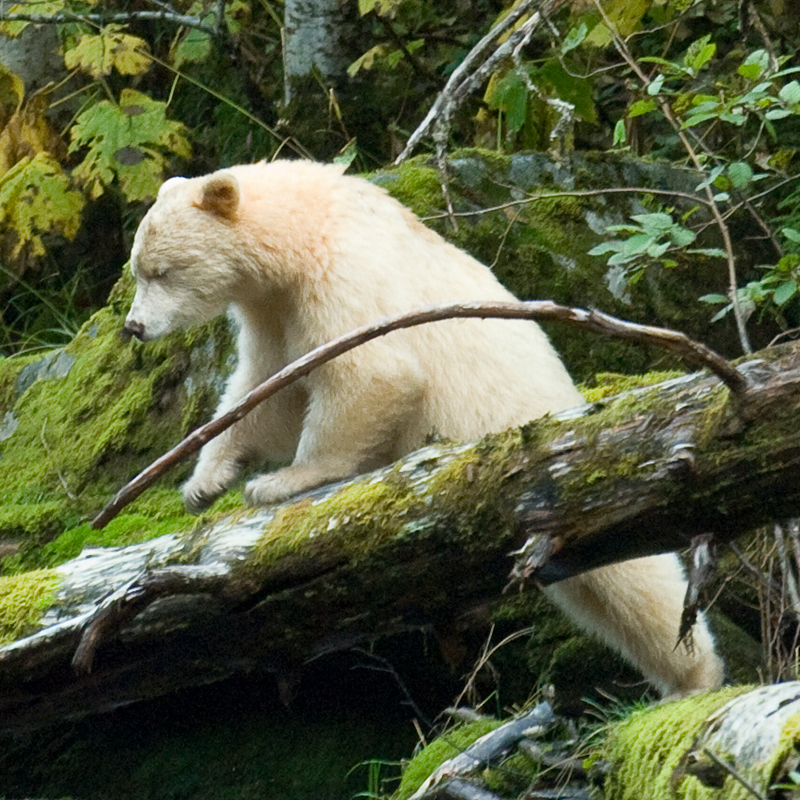 Eduardo Sousa walks us through an incredible, historical agreement on the Pacific Coast of Canada to protect a rainforest the size of Belgium. Bonus: What exactly is a Spirit Bear?
Andrew Norton answers the questions you never knew you had on the new podcast: #CompletelyOptionalKnowledge. This story: What pisses off scientists the most in the movies?
Eduardo Sousa walks us through an incredible, historical agreement on the Pacific Coast of Canada to protect a rainforest the size of Belgium. Bonus: What exactly is a Spirit Bear?
Andrew Norton answers the questions you never knew you had on the new podcast: #CompletelyOptionalKnowledge. This story: What pisses off scientists the most in the movies?
Looking for Love
From Angela Regas | 06:50
In August of 2009 I was 29 years old, single, and living in Iowa City. I wasn’t going to be 29 much longer, and I decided I didn’t want to be single much longer, either. So I went looking online, not for love, but something a little more mundane, something between U-Hauls and one night stands. So far I’ve found a Latin lover, a cougar-seeking piece of “hot chocolate,” and a Satanist named Dan. And you know? He just might be the one.
- Playing
- Looking for Love
- From
- Angela Regas
 In August of 2009 I was 29 years old, single, and living in Iowa City. I wasn’t going to be 29 much longer, and I decided I didn’t want to be single much longer, either. So I went looking online, not for love, but something a little more mundane, something between U-Hauls and one night stands. So far I’ve found a Latin lover, a cougar-seeking piece of “hot chocolate,” and a Satanist named Dan. And you know? He just might be the one.
In August of 2009 I was 29 years old, single, and living in Iowa City. I wasn’t going to be 29 much longer, and I decided I didn’t want to be single much longer, either. So I went looking online, not for love, but something a little more mundane, something between U-Hauls and one night stands. So far I’ve found a Latin lover, a cougar-seeking piece of “hot chocolate,” and a Satanist named Dan. And you know? He just might be the one.
Zach Paige: Seed preservation
From Northern Community Radio - KAXE & KBXE, Minnesota | Part of the Call of the Wild series | 15:44
Milt Lee talks to Zach Paige about his move in life from Long Island to the White Earth Reservation where he works with the Land Recovery Project helping to preserve original seeds for planting.

Rebeldes: A Journey through New Mexican Agriculture
From Terrascope Radio | Part of the Terrascope Radio Major Features series | 24:40
An engaging and informative look at farmers in a desert landscape, and at how their individual farming styles reflect their personal values.

Math, Psychology, Philosophy... Sex?
From SexReally | Part of the SexReally Show series | 09:37
What does Aristotle have to do with your sex life?
- Playing
- Math, Psychology, Philosophy... Sex?
- From
- SexReally
 Several community colleges around the country are participating in an experiment to see if discussions and writing assignments about sex can help students make good sexual decisions.
Several community colleges around the country are participating in an experiment to see if discussions and writing assignments about sex can help students make good sexual decisions.
Where in the World is Don Gamble?
From peter stock | 21:42
In the late 1990s, crack environmental consultant Don Gamble checked out of his comfortable east coast professional life...and disappeared. Ten years later, he resurfaced, as Swami Sivananda.
- Playing
- Where in the World is Don Gamble?
- From
- peter stock

"Haven't you ever just wanted to chuck it all in, and escape a daily routine that you felt was wearing you down? Just sell the house, the car, give up the electronic gadgetry, the monthly bills, the commute...
We all have. But few of us have the courage to just do it.
Top environmental consultant Don Gamble did find the courage to do just that back in the early 1990s.
Feeling disillusioned with the international environmental impact assessments he was working on, he bailed out, gave it all up, rediscovered yoga and meditation and found... peace."
Where in the World is Don Gamble?
From peter stock | 21:42
In the late 1990s, crack environmental consultant Don Gamble checked out of his comfortable east coast professional life...and disappeared. Ten years later, he resurfaced, as Swami Sivananda.
- Playing
- Where in the World is Don Gamble?
- From
- peter stock

"Haven't you ever just wanted to chuck it all in, and escape a daily routine that you felt was wearing you down? Just sell the house, the car, give up the electronic gadgetry, the monthly bills, the commute...
We all have. But few of us have the courage to just do it.
Top environmental consultant Don Gamble did find the courage to do just that back in the early 1990s.
Feeling disillusioned with the international environmental impact assessments he was working on, he bailed out, gave it all up, rediscovered yoga and meditation and found... peace."
Doomed Island
From peter stock | 23:02
The heart-wrenching true tale of a South Pacific island paradise that commits ecological suicide.
- Playing
- Doomed Island
- From
- peter stock
 Nauru is a teeny speck of an island in the middle of the Southpacific. Once a bountiful habitat for 1,000 residents, in the past 150 years Nauru has been reduced to a lunar landscape of rubble. Novelist David Kendall tells the whipsaw tale of greed and shortsightedness, how phosphates made these islanders among the richest people in the world and how its subsquent depletion -- by their own hands -- has left them bankrupt and hopeless.
Nauru is a teeny speck of an island in the middle of the Southpacific. Once a bountiful habitat for 1,000 residents, in the past 150 years Nauru has been reduced to a lunar landscape of rubble. Novelist David Kendall tells the whipsaw tale of greed and shortsightedness, how phosphates made these islanders among the richest people in the world and how its subsquent depletion -- by their own hands -- has left them bankrupt and hopeless.
Fighting Ford: Hard Times in Detroit
From Chris Boulton | 12:14
In this intimate oral history, my uncle recalls how the Ford sit-down strike of 1937 radicalized him as a young man.
- Playing
- Fighting Ford: Hard Times in Detroit
- From
- Chris Boulton
 As America pulls out of the recession and Detroit retools for the future, this first-hand account revisits a contentious time in our collective past with humor and pathos. It's a story of the American Dream in the midst of the Great Depression and the birth of the UAW. A story told by the teenager who visited his Dad at the barricades of what the BBC called "the strike heard round the world."
As America pulls out of the recession and Detroit retools for the future, this first-hand account revisits a contentious time in our collective past with humor and pathos. It's a story of the American Dream in the midst of the Great Depression and the birth of the UAW. A story told by the teenager who visited his Dad at the barricades of what the BBC called "the strike heard round the world."
Native Sounds: Gary Farmer
From Vision Maker Media | Part of the Native Sounds series | 11:12
Brendan McCauley speaks with Native American actor and musician Gary Farmer.
- Playing
- Native Sounds: Gary Farmer
- From
- Vision Maker Media
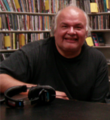
Zora Neale Hurston
From KSLU | Part of the In Your Face Women series | 02:21
Zora was one of the shining lights of the Harlem Renaissance as a writer of novels, short stories, essays, articles, plays, folklore collections, and even an autobiography.
- Playing
- Zora Neale Hurston
- From
- KSLU
 One night in 1925, at a literary awards dinner, Zora Neale Hurston (who had herself won fourof the awards that night) entered the ballroom, threw a long, brightly colored scarf over her shoulder and around her neck with a flourish and bellowed, "Coloooor Struuuuck!" (the name of one of her plays). And that's just the way this in-your-face woman rolled.
One night in 1925, at a literary awards dinner, Zora Neale Hurston (who had herself won fourof the awards that night) entered the ballroom, threw a long, brightly colored scarf over her shoulder and around her neck with a flourish and bellowed, "Coloooor Struuuuck!" (the name of one of her plays). And that's just the way this in-your-face woman rolled.
Teacher Crush Vox
From Curie Youth Radio | 02:17
A vox full of memories of innocent teacher crushes.
- Playing
- Teacher Crush Vox
- From
- Curie Youth Radio
 A vox that works for National Teacher Day, Valentine's Day, or maybe a day close to graduation. This is a light hearted collection of student voices waxing poetic about teacher crushes.
A vox that works for National Teacher Day, Valentine's Day, or maybe a day close to graduation. This is a light hearted collection of student voices waxing poetic about teacher crushes.
#141 - Morphing Print Essays into Radio
From HowSound | 13:40
Here’s a modest proposal. For stations and programs and podcasts looking for content, collaborate with essayists — especially authors who are already writing for newspapers, magazines, and the web. A story from the New York Times made into radio by The Takeaway offers a great example.
- Playing
- #141 - Morphing Print Essays into Radio
- From
- HowSound

Here’s a modest proposal. For stations and programs and podcasts looking for content, collaborate with essayists — especially authors who are already writing for newspapers, magazines, and the web.
Of course, it’s not as simple as just recording what they’ve written and putting it on the air. Length, the writing, the delivery of the author. . .those elements and more need to be considered. But, those issues aren’t insurmountable and The Takeaway proved it.
Back in October, 2016, the New York Times published an essay about the war in Yemen written by Mohammed al-Asaadi. The staff at The Takeaway read it and said: this needs to be on the radio. So, they made it happen. The result is compelling.
Jay Cowit is the Technical Director for The Takeaway . Jay walks us through the steps to recording and sound-designing the essay — great lessons for anyone looking to produce print essays for the radio.
Episode 2: A Ballroom Dancer, A Shark, And A PR Problem
From Wyoming Public Radio | Part of the HumaNature series | 14:04
Debbie Salamone was an environmental journalist who was passionate about the ocean—and ballroom dancing. One day at the beach, all that changed.
 Debbie Salamone was an environmental journalist who was passionate about the ocean—and ballroom dancing. One day at the beach, all that changed.
Debbie Salamone was an environmental journalist who was passionate about the ocean—and ballroom dancing. One day at the beach, all that changed.
Episode 9: May The Road Rise Up To Meet You, And May The Wind Stop Blowing In Your Face
From Wyoming Public Radio | Part of the HumaNature series | 17:24
Christina Lee should have been having the time of her life. Instead, she was stressed and lonely. Until she decided to run away from the rat race…all the way from New York to San Francisco.
 Christina Lee should have been having the time of her life. Instead, she was stressed and lonely. Until she decided to run away from the rat race…all the way from New York to San Francisco.
Christina Lee should have been having the time of her life. Instead, she was stressed and lonely. Until she decided to run away from the rat race…all the way from New York to San Francisco.
Solidarity And Revolt Aboard The Slave Ship Creole
From WWNO | Part of the TriPod: New Orleans At 300 series | 10:23
In this episode of TriPod, Laine Kaplan-Levenson discusses the slave revolt on the Brig Creole with Harvard Professor Walter Johnson.
- Playing
- Solidarity And Revolt Aboard The Slave Ship Creole
- From
- WWNO

A “brig” is a two-masted ship, a big ship. And “brig” is the word used for a prison on a ship. And the Brig Creole is an 1800s ship that was meant to deliver 135 enslaved people to New Orleans. "Meant" being the key word here…
The ship left Virginia on October 30, 1841, with plans to take the same route that dozens of ships took to the port of New Orleans.
Walter Johnson, History Professor at Harvard University, says as of 1841, nothing could have been more ordinary than this journey. This was the height of the domestic slave trade in the United States.
“The bulk of the enslaved people who form the labor force in the emerging cotton kingdom are taken from the upper south, as one of the largest forced migrations in human history,” Johnson says.
Ships brought thousands of people into the New Orleans slave market. But those on board the Creole were determined to make moves and not land in the cotton kingdom.
Britain outlawed the international slave trade with the Slave Trade Act of 1807, and its ships take the lead in policing the high seas, searching ships of other nations. They sign bilateral treaties with Atlantic trading nations like Portugal, Sweden, France and others. But there’s one country that responds to this with "aw, hell no": America.
"So a British naval crew trying to interdict slave shipments is not allowed to stop a ship that has the American flag”, says Johnson. “What that means, in the words of the historian WEB DuBois, is that through the first half of the 19th century, Old Glory became the slave trader’s flag of choice.”
Other countries became hip to what the U.S. flag meant at sea, and started switching flags.
“So say you're a Spanish slave trader and you see a British naval ship on the horizon. The first thing the slave traders do is they run up the American flag, because that way they are protected by the mantle of American national sovereignty.”
So the U.S. was notoriously defiant, and we knew it. But back to 1841 and the Brig Creole, sailing the Atlantic under that flag, and everything it represented. A week into the journey, on the night of November 7, William Merritt, one of the slave traders aboard the Creole, goes down into the hold.
“He sees Madison Washington, who is one of the slave men” Johnson says. “He’s out of the hold where he's supposed to be. There's a confrontation, and the slave trader escapes from Washington's grasp and runs back on to the deck of the ship. He hears a shot fired and realizes that some of the slaves in the ship are in revolt, and within four or five hours the slaves have complete control of the ship.”
One slave trader is killed and thrown overboard, and captain Robert Ensor is wounded. Nineteen slaves are later identified as the rebels responsible for the revolt. They had heard of a ship that had departed from Virginia the year before, and shipwrecked in the Bahamas. That was British territory -- no slave trade allowed -- and those shipwrecked slaves were eventually emancipated by the local British government.
It was with that story in mind that the rebels took command of the Brig Creole, and re-routed it to Nassau, Bahamas.
The ship sails into the port in the Bahamas, and at that point, the 19 rebels kind of step down from power to mix in with the rest of the slaves. This is in hopes of not being targeted as criminals, but Johnson says what it also does is allow the white crew to reassert control and let Old Glory do the talking. “By raising the American flag is to say to the British ‘you have no interest in this. Just give us back the cargo and we'll push on to New Orleans.’”
Not so fast, say the British, who come on board to investigate what happened. They’re told by the Brig Creole crew that a group of slaves rebelled and briefly took control, which is why they’re docked in Nassau. But the Brits respond by saying, "Hey, USA, you can’t claim that a slave revolt has occurred. Not here, anyway."
“Because if there's no such thing as slavery in the British Empire,” says Johnson, “then there cannot be a slave revolt.”
The white crew just wants to keep the slaves on board, get back out to sea, and go make their profit in New Orleans. But Johnson points out that the community of Nassau at that time is mainly African. It’s full of emancipated slaves, and the West Indian regiment of Britain’s army. They realize what’s going on relates to them to the extent that many of them get into small boats with clubs and go out and position themselves around the Creole in order to protect it from any effort by the white crew to take it away and sail it back to New Orleans.
When the Americans realized need to regain control in the harbor, they tried to buy more weapons on shore, and no one in Nassau would sell them weapons. Johnson says there's this revolutionary Black Atlantic, there's the symbol of the American flag moving through the water saying "Don't mess with us, don't touch us," there's the British who have abandoned this ideology of slavery. And then all three of those forces just comes to a head at Nassau. “It’s pretty amazing what they did, right? So there's a story of the establishment of political solidarity under extreme conditions here.”
Political solidarity on many levels. As Johnson describes, the community in Nassau surrounds the docked Brig Creole in smaller boats to say "you guys aren’t going anywhere with those slaves -- they’re not yours anymore."’ The local government defends the community’s actions, and lends further support with their army! And the whole town boycotts American business by refusing to sell them weapons. Johnson says that it’s important to remember that before all this, was the plan to take over the ship in the first place.
“I mean these are 19 people who are from different areas of Virginia who have not known one another before they met in the slave pen and then on the slave ship in Virginia. At the end of October. And within a week, they come to trust one another and off to risk their lives on this venture. That's incredible.”
This is not something the white crew was expecting. Otherwise the ship’s captain, Robert Ensor, would have never brought his family along. In an article Johnson wrote about the incident, he writes:
For what else to call the oblivious confidence with which a man like Ensor brought a fifteen month old child aboard a slave ship. And an aspect of the property he held in his own slaves produced whiteness. A certainty born of history that events would break in his favor. That all would be well.
“And yet he's willing to lie to himself and say this is going to go all right,” says Johnson. “Just like it always has been before. And it doesn't. It doesn't go all right.”
For the slave traders, at least. After months of depositions, insurance claims, and detention in jail, all the slaves, including the 19 rebels, were offered freedom. According to Johnson, ignorance and denial on behalf of the whites on board is what made something like this possible. They chose not to see that this "cargo" was capable not only of organization, but heroism. He says it all goes back to when the slave trader, William Merritt, first discovered one of his previously obedient slaves out of the hold.
“That moment seems be an extraordinary moment. This man Merritt, who thought that he was in one kind of history, is forced to confront the idea of the fact that something doesn't make sense. Something's happening that he doesn't understand. He says "but you're the last person I would expect to be out of order on the ship." And then it gradually dawned on him, and he starts to run. And that seems to me to be a moment, and a sense of possibility and danger that it's really worth us trying to imagine and capture.”
This boatwide emancipation was celebrated by abolitionists, and used in efforts to close the U.S. domestic slave trade. New Orleans was the main engine of that trade, and continued to profit from the trade for another 20 years. And although the story of the Brig Creole does not end in New Orleans, it was meant to, and shows the city’s prominent role within an Atlantic world full of slavery and revolution. Talk about rocking the boat…
Emmett and Trayvon
From The Center for Documentary Studies | 13:22
Documentary Theater artist Mike Wiley performs and discusses Dar He, his one-man play about the murdered teenager Emmett Till.
- Playing
- Emmett and Trayvon
- From
- The Center for Documentary Studies

Mike Wiley set out to be an actor – the usual kind, who gets hired to say fictional lines written by other people. Instead, he’s carved out a career doing documentary theater. Wiley writes plays that tell true stories from African American History, and hires himself to play all the roles.
One of his one-man plays tells the story of Emmett Till, the black Chicago teenager who was murdered in Mississippi in 1955. John Biewen tagged along as Mike Wiley performed that play in Florida, not far from where Trayvon Martin lived and died almost a half-century later.
A Conversation with Isabel Wilkerson
From National Endowment for the Arts | Part of the Art Works series | 25:33
Isabel Wilkerson talks about her book, The Warmth of Other Suns: The Epic Story of America's Great Migration, focusing on the transfer of Southern culture to the North, creating a new, vibrant culture in the country.

"I was leaving the South to fling myself into the unknown.
I was taking a part of the South to transplant in alien soil,
to see if it could grow differently,
if it could drink of new and cool rains,
bend in strange winds,
respond to the warmth of other suns,
and, perhaps, to bloom."
That evocative description of leaving one's home in the North for another life in the South was in a footnote in Richard Wright's autobiography, Black Boy. Wright was one of six million African Americans who made that journey in the period following World War I through the 1960s. This mass movement of people became known as The Great Migration, and it's the subject of Isabel Wilkerson's acclaimed new book; which she titled The Warmth of Other Suns.
WTW Texts of Resistance
From Modern Language Association | Part of the What's the Word? Two half-hour programs celebrating Black History Month series | 29:00
How did slaves resist their oppression? Three works explore what it means to resist and to survive.
- Playing
- WTW Texts of Resistance
- From
- Modern Language Association

Texts of Resistance
Since the late eighteenth century, writers have addressed the issue of transatlantic slavery. Some of the works are direct calls to abolitionist action; others define resistance more subtly. On this program, John Bugg talks about an eighteenth-century slave narrative, The Interesting Narrative of the Life of Olaudah Equiano; Russ Castronovo tells us about Frederick Douglass’s novella, The Heroic Slave; and Natasha Barnes explores The Known World by Edward P. Jones.
Well-suited to Black History Month in February.
Fifteen- and thirty-second promos available.
BHM Special: The Life of Arthur Ashe (half)
From With Good Reason | 28:59
The life and times of athlete, author, and activist Arthur Ashe - Profiling a program to help African-American college students graduate
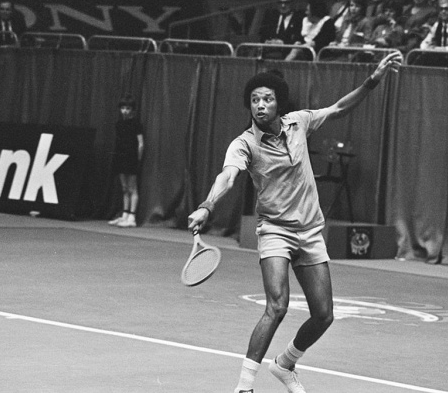 Tennis great Arthur Ashe first emerged as a world-class athlete with his win over Jimmy Connors at Wimbledon, but his contributions as an activist, author, and humanitarian eventually transcended his sporting success. Whit Sheppard is working on a biography of Arthur Ashe, who died at age 49 of AIDS related pneumonia. And: Philanthropist Doris Buffett, sister of Warren Buffett, has funded a new program that helps first generation college students earn associate’s degrees in high school. Ann Woolford and Antwan Perry say the initiative is especially helpful for young African American males, who have the lowest national graduation rate.
Tennis great Arthur Ashe first emerged as a world-class athlete with his win over Jimmy Connors at Wimbledon, but his contributions as an activist, author, and humanitarian eventually transcended his sporting success. Whit Sheppard is working on a biography of Arthur Ashe, who died at age 49 of AIDS related pneumonia. And: Philanthropist Doris Buffett, sister of Warren Buffett, has funded a new program that helps first generation college students earn associate’s degrees in high school. Ann Woolford and Antwan Perry say the initiative is especially helpful for young African American males, who have the lowest national graduation rate.
On the Move in Mongolia
From Outer Voices | 23:43
There I was, an Indian woman on the move in a strange new land - Mongolia - and it didn't feel so strange. So much resonated - especially the voices of other women - like Monjago, a nomadic herder, Munkhtsetseg, a horse trainer, Onika, a student, Amgalan, a language teacher and Jainaa, a singer. They made faraway feel like home. Produced by Shebana Coelho for Outer Voices. Visit www.storiesfromthesteppe.com for a multimedia version of the piece featuring photos and audio.
- Playing
- On the Move in Mongolia
- From
- Outer Voices


Harvard Critic Helen Vendler on Emily Dickinson
From Jenny Attiyeh | 18:02
When Helen Vendler was only 13, the future poetry critic and Harvard professor memorized several of Emily Dickinson’s more famous poems. They’ve stayed with her over the years, and today, she talks with ThoughtCast’s Jenny Attiyeh about one poem in particular that’s haunted her all this time. It’s called "I cannot live with You-".
According to Vendler, whose authoritative "Dickinson: Selected Poems and Commentaries" has recently been published, it’s a heartbreaking poem of an unresolvable dilemma, and ensuing despair.

When Helen Vendler was only 13, the future poetry critic and Harvard professor memorized several of Emily Dickinson’s more famous poems. They’ve stayed with her over the years, and today, she talks with ThoughtCast’s Jenny Attiyeh about one poem in particular that’s haunted her all this time. It’s called I cannot live with You-
According to Vendler, whose authoritative Dickinson: Selected Poems and Commentaries has recently been published, it’s a heartbreaking poem of an unresolvable dilemma, and ensuing despair.
This interview is the first in a new ThoughtCast series which examines a specific piece of writing — be it a poem, play, novel, short story, work of non-fiction or scrap of papyrus — that’s had a significant influence on the interviewee, that’s shaped and moved them.
Up next – esteemed novelist and short story writer Tom Perrotta discusses Good Country People, a short story by Flannery O’Connor that’s particularly meaningful to him.
Storm Over the Mountain
From Eileen McAdam | 16:41
Almost 50 years ago, a group of concerned citizens battled energy giant Consolidated Edison and launched the environmental movement.
- Playing
- Storm Over the Mountain
- From
- Eileen McAdam
 We take it for granted that you can defend scenic beauty, wildlife and the environment with the power of the law. But there was a time when pollution by corporations went relatively unchecked until a small group of concerned citizens decided to fight back. Their struggle launched the modern environmental movement. It happened in the Hudson Valley and it all began with an image. An inspiring fun piece that celebrates the men and women who fought for 17 years to protect the Hudson River.
We take it for granted that you can defend scenic beauty, wildlife and the environment with the power of the law. But there was a time when pollution by corporations went relatively unchecked until a small group of concerned citizens decided to fight back. Their struggle launched the modern environmental movement. It happened in the Hudson Valley and it all began with an image. An inspiring fun piece that celebrates the men and women who fought for 17 years to protect the Hudson River.
Mexican long-nosed bats ~ Leptonycteris nivalis
From Atlantic Public Media | Part of the One Species at a Time ~ The Encyclopedia of Life series | 05:30
There is a bat man in Mexico, and he has his own bat-cave...
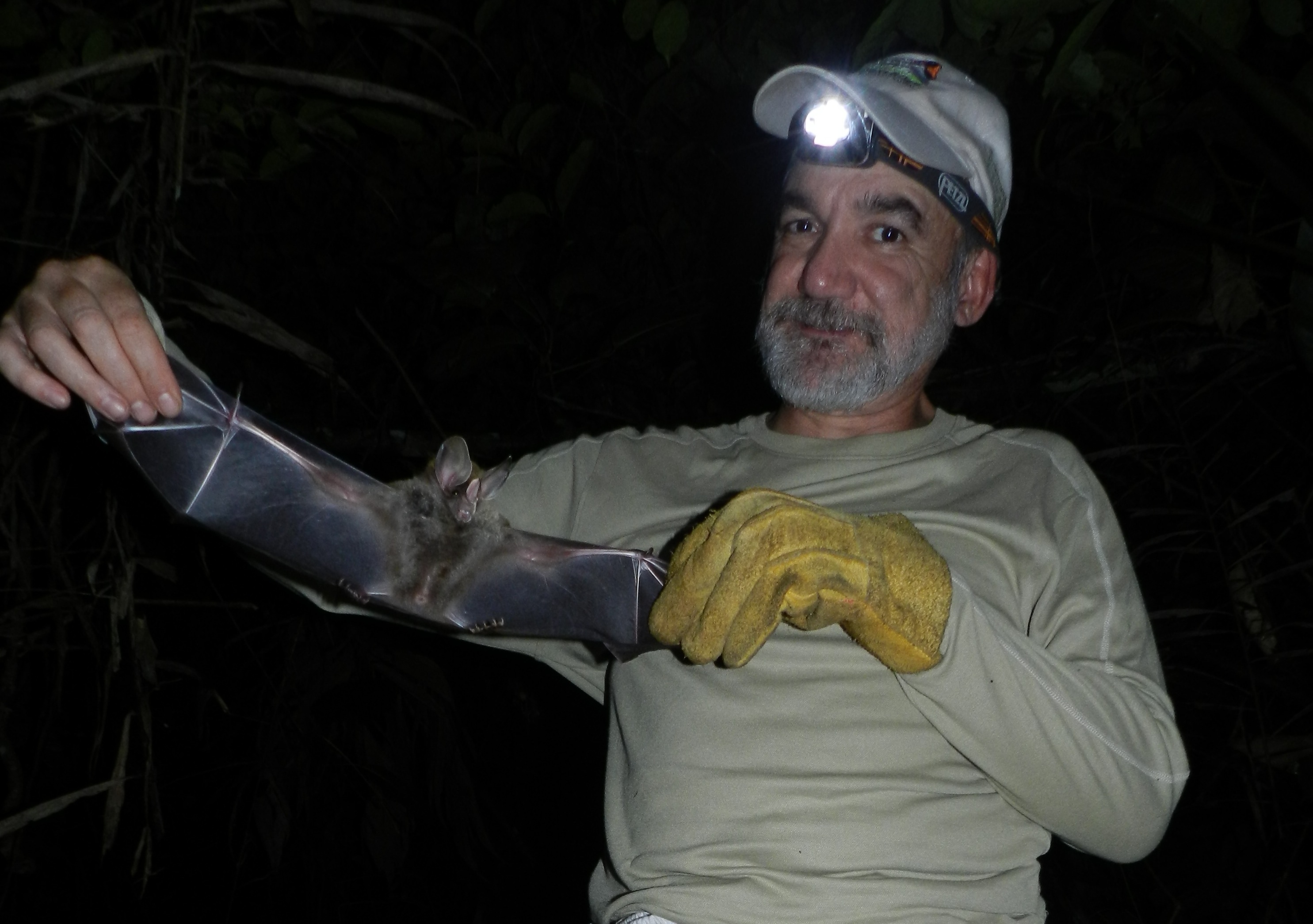 The batman of Mexico has his own bat-cave. He just shares it with 4,000 Mexican long-nosed bats. In this episode, join researcher Rodrigo Medellin as he descends into the Devil’s Cave just north of Mexico City. It’s a journey that started decades ago when Medellin was on a game show as a boy. He lost the game show, but won a prize far more valuable—for himself, his students, and Mexico’s bats. Ari Daniel Shapiro reports from Tepoztlán.
The batman of Mexico has his own bat-cave. He just shares it with 4,000 Mexican long-nosed bats. In this episode, join researcher Rodrigo Medellin as he descends into the Devil’s Cave just north of Mexico City. It’s a journey that started decades ago when Medellin was on a game show as a boy. He lost the game show, but won a prize far more valuable—for himself, his students, and Mexico’s bats. Ari Daniel Shapiro reports from Tepoztlán.
Passing Stranger: The East Village Walking Tour
From HowSound | 12:34
Pejk Malinovksy on producing audio tours including Passing Stranger: The East Village Poetry Walk
- Playing
- Passing Stranger: The East Village Walking Tour
- From
- HowSound

It used to be people would say "Oh, the 1940s and 50s, that was the Golden Age of radio." Maybe ten years ago they were right.
Now, I'd say the 2010s are Golden Age of Radio. Take radio itself then add on satellite radio, HD radio, the internet, podcasts, mobile devices... the deluge of audio content is ridiculous. And, I didn't even mention audio tours, the topic on this edition of HowSound.
Radio producer Pejk Malinovski has ventured into the world of producing audio tours. He thinks other radio producers should, too, if for no other reason than they both use the same tools and skill set. Pejk's first audio tour production was Passing Stranger: The East Village Poetry Walk . On HowSound, Pejk talks about the tour and some of the differences between producing for radio and producing for a tour.
You should be sure to visit the Passing Stranger site AFTER you listen to the podcast. It's fascinating to see how they repurposed the audio tour for the web. Insanely clever, I'd say.
Happy listening!
Rob
Episode 5: Venus and Us: Two Stories of Climate Change
From PRX | Part of the Transistor series | 17:32
Space scientists are acutely aware of what can happen when climates change in other parts of our solar system. Take Venus, where it rains sulfuric acid and is 900°F on the surface, but it wasn’t always that way. Astrophysicist Michelle Thaller talks with a NASA expert on Venus about how the planet became a hellscape. And she talks with the Library of Congress’ inaugural chair of astrobiology about how to grasp this new geologic era where humans cause rapid change.
 Space scientists are acutely aware of what can happen when climates change in other parts of our solar system. Take Venus, where it rains sulfuric acid and is 900°F on the surface, but it wasn’t always that way. Astrophysicist Michelle Thaller talks with a NASA expert on Venus about how the planet became a hellscape. And she talks with the Library of Congress’ inaugural chair of astrobiology about how to grasp this new geologic era where humans cause rapid change.
Space scientists are acutely aware of what can happen when climates change in other parts of our solar system. Take Venus, where it rains sulfuric acid and is 900°F on the surface, but it wasn’t always that way. Astrophysicist Michelle Thaller talks with a NASA expert on Venus about how the planet became a hellscape. And she talks with the Library of Congress’ inaugural chair of astrobiology about how to grasp this new geologic era where humans cause rapid change.
Listen Up: Music & Politics (half)
From With Good Reason | Part of the With Good Reason: Weekly Half Hour Long Episodes series | 29:00
One man's quest to free Africa's historical recordings from the colonial archives - Teaching hip-hop diplomats how to use music for peace
- Playing
- Listen Up: Music & Politics (half)
- From
- With Good Reason

Since long before Louis Armstrong was sent to Egypt as a representative of the State Department, the United States has been using music as a key part of diplomacy. For Arthur Romano, a consultant on State Department musical missions overseas, music is an important form of conflict resolution. And: Noel Lobley wanted to give colonial musical archives back to the people — so he strapped DJ booths to donkey carts and took to the streets.
700 Fathoms Under the Sea
From PRX | Part of the Transistor series | 08:11
Something unusual happens about a half mile under the sea. Ocean physics create a special zone where sound travels for hundreds, even thousands of miles. Whales use it, and cold warriors plumbed its secrets. Listen in.
- Playing
- 700 Fathoms Under the Sea
- From
- PRX
 Something unusual happens about a half mile under the sea. Ocean physics create a special zone where sound travels for hundreds, even thousands of miles. Whales use it, and cold warriors plumbed its secrets. Listen in.
Something unusual happens about a half mile under the sea. Ocean physics create a special zone where sound travels for hundreds, even thousands of miles. Whales use it, and cold warriors plumbed its secrets. Listen in.
Fields of Remembrance
From With Good Reason | Part of the With Good Reason: Weekly Half Hour Long Episodes series | 28:59
To honor the young men who sacrificed their lives in the D-Day invasion, Brigadier General Casey Brower takes young cadets on tours of the American cemeteries in France.
- Playing
- Fields of Remembrance
- From
- With Good Reason
 When President Ronald Reagan traveled to Normandy in 1984 to mark the 40th anniversary of the D-Day invasion, a young army officer, Casey Brower, was with him and was deeply moved. Casey is now Brigadier General Casey Brower and takes cadets from Virginia Military Institute on tours of the American cemeteries for the fallen soldiers in France. The cadets are of the same age as many of the young men who made the sacrifice in the D-Day assault. Also featured: The Great Kanto Earthquake struck Japan in 1923 and killed more than 100,000 people. In the chaos after the disaster rumors circulated that led hysterical Japanese vigilantes to lynch thousands of Korean and Chinese guest workers. Eric Han explores how modern Japan’s reaction to the recent earthquake reflects how that nation has changed in the intervening decades.
When President Ronald Reagan traveled to Normandy in 1984 to mark the 40th anniversary of the D-Day invasion, a young army officer, Casey Brower, was with him and was deeply moved. Casey is now Brigadier General Casey Brower and takes cadets from Virginia Military Institute on tours of the American cemeteries for the fallen soldiers in France. The cadets are of the same age as many of the young men who made the sacrifice in the D-Day assault. Also featured: The Great Kanto Earthquake struck Japan in 1923 and killed more than 100,000 people. In the chaos after the disaster rumors circulated that led hysterical Japanese vigilantes to lynch thousands of Korean and Chinese guest workers. Eric Han explores how modern Japan’s reaction to the recent earthquake reflects how that nation has changed in the intervening decades.
College Credits for Free (Feature)
From With Good Reason | Part of the news features series | 03:35
It used to be that a high school education was enough to support a comfortably middle class lifestyle. But these days, it takes a lot more to get a well-paying job. So, community colleges in Virginia are offering a program that helps students save time and money on their way to university degrees. Lilia Fuquen has the story.
- Playing
- College Credits for Free (Feature)
- From
- With Good Reason

t used to be that a high school education was enough to support a comfortably middle class lifestyle. But these days, it takes a lot more to get a well-paying job. So, community colleges in Virginia are offering a program that helps students save time and money on their way to university degrees. Lilia Fuquen has the story.
The Pioneers Carrying Their Parent's Dreams: First Generation College Students
From Syracuse University Broadcast Journalism | 05:49
Today 50% of all college students are the first of their families to go to college. They carry the hopes and dreams of there families in their backpacks. Discover the surprising challenges these hidden pioneers face in getting their 4 year degree.
 Today 50% of all college students are the first of their families to go to college. They carry the hopes and dreams of there families in their backpacks. Discover the surprising challenges these hidden pioneers face in getting their 4 year degree.
Today 50% of all college students are the first of their families to go to college. They carry the hopes and dreams of there families in their backpacks. Discover the surprising challenges these hidden pioneers face in getting their 4 year degree.
The Tale of Honeybee Brown (feature)
From With Good Reason | Part of the news features series | 04:22
Between a changing climate and an invasion of parasites, it’s a tough time for the little honeybee. A Norfolk woman’s quest to give bees a home may yield valuable research on their plight. She’s putting “bee backpacks” in the hands of local kids. John Last has that story.
- Playing
- The Tale of Honeybee Brown (feature)
- From
- With Good Reason
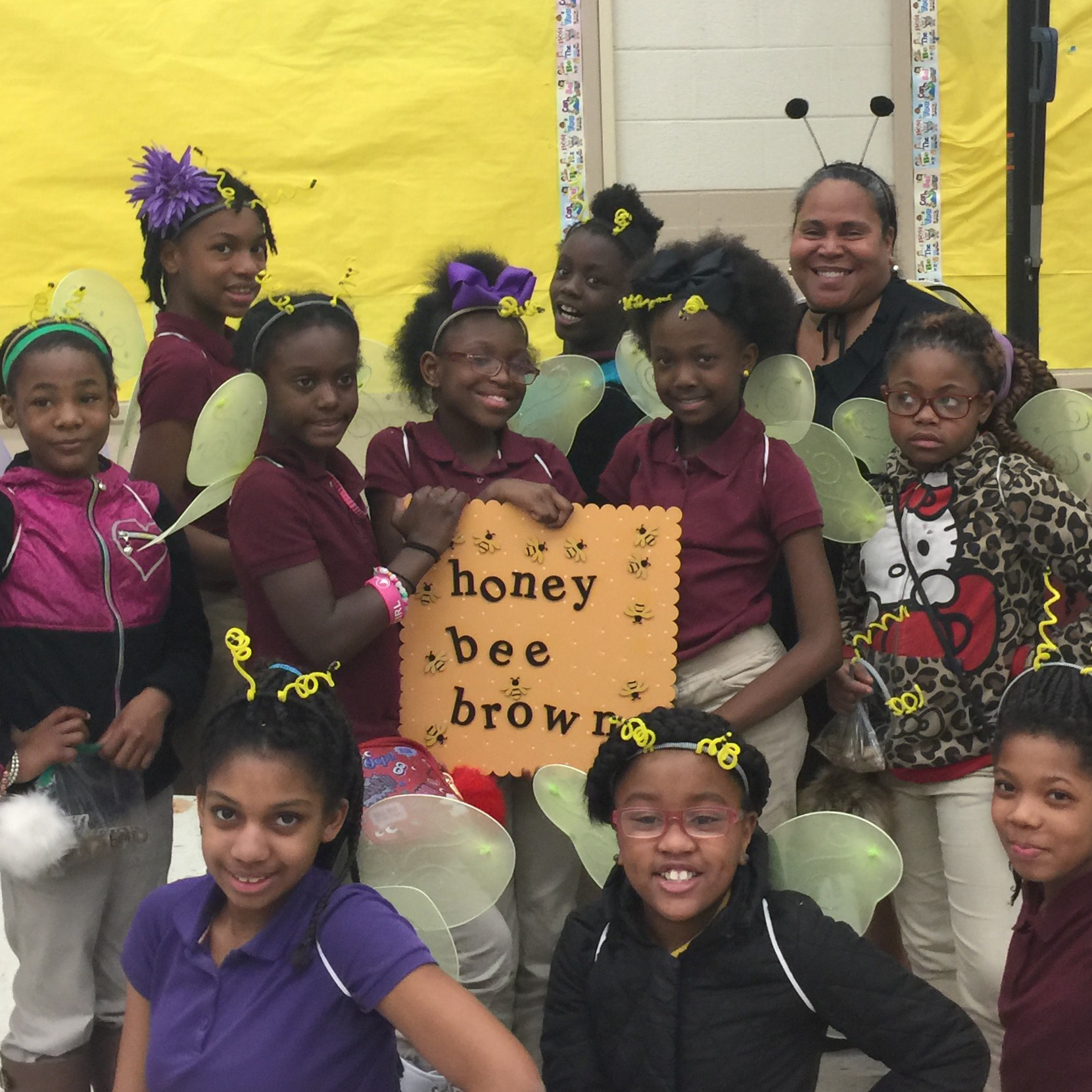 Between a changing climate and an invasion of parasites, it’s a tough time for the little honeybee. A Norfolk woman’s quest to give bees a home may yield valuable research on their plight. She’s putting “bee backpacks” in the hands of local kids. John Last has that story.
Between a changing climate and an invasion of parasites, it’s a tough time for the little honeybee. A Norfolk woman’s quest to give bees a home may yield valuable research on their plight. She’s putting “bee backpacks” in the hands of local kids. John Last has that story.
From Kremlin to Kremlin (feature)
From With Good Reason | Part of the news features series | 04:02
We may be in a period of historic closeness between Russia and the United States, but there was a time when hundreds of African-American scientists were helping Russia build a better Soviet state.
- Playing
- From Kremlin to Kremlin (feature)
- From
- With Good Reason
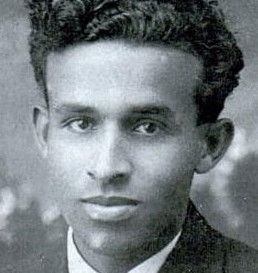 We may be in a period of historic closeness between Russia and the United States, but there was a time when hundreds of African-American scientists were helping Russia build a better Soviet state.
We may be in a period of historic closeness between Russia and the United States, but there was a time when hundreds of African-American scientists were helping Russia build a better Soviet state.
Summer Solstice - Dawn Songs
From BirdNote | 01:45
On the Summer Solstice, the longest day of the year, birds across the North American continent greet the dawn — from the Florida Keys and the marshes of Chesapeake Bay, from the Rio Grande Valley of Texas and the great plains of North Dakota, to the mountains of New Mexico and the Pacific Northwest, and all the way up to the Arctic. Wherever you live, step outside and listen to the magnificent chorus. Click on “Full Transcript” to see a list of the birds in this story.
- Playing
- Summer Solstice - Dawn Songs
- From
- BirdNote
 On the Summer Solstice, the longest day of the year, birds across the North American continent greet the dawn — from the Florida Keys and the marshes of Chesapeake Bay, from the Rio Grande Valley of Texas and the great plains of North Dakota, to the mountains of New Mexico and the Pacific Northwest, and all the way up to the Arctic. Wherever you live, step outside and listen to the magnificent chorus. Click on “Full Transcript” to see a list of the birds in this story.
On the Summer Solstice, the longest day of the year, birds across the North American continent greet the dawn — from the Florida Keys and the marshes of Chesapeake Bay, from the Rio Grande Valley of Texas and the great plains of North Dakota, to the mountains of New Mexico and the Pacific Northwest, and all the way up to the Arctic. Wherever you live, step outside and listen to the magnificent chorus. Click on “Full Transcript” to see a list of the birds in this story.
On Fort Belknap Reservation, a DIY Approach to Recovery
From University of Montana Journalism | Part of the The Meth Effect series | 08:31
News feature that profiles a first-of-its-kind recovery program for a meth and addiction problem that's only become worse on a northern Montana reservation. Produced by Nora Saks at the University of Montana School of Journalism.

The myth of meth is that following the crackdown on over-the-counter ingredients in 2005, things got better in Montana. But on the Fort Belknap Indian Reservation, people will tell you different
Here it never really went away.
“Getting high in your car in front of the store - that ain't a big deal,” said Miranda Kirk.
“Leaving your paraphernalia out in the open for someone to walk in - that's alright,” said Kirk. “Having and seeing needles everywhere - that's ok. Even talking about selling your needles - that's normal too.”
Kirk, a 27-year-old mother of four, was born and raised in Fort Belknap, home to the Aaniiih and Nakoda, or Gros Ventre and Assiniboine tribes. She grew up around drugs, alcohol, and addiction, and has dealt with the fallout her whole life. When she came back home, she told the tribal council it shoudl do something drastic. So it said: Here's some support. How about YOU try. So Kirk and her sister created the Aaniiih Nakoda Anti-Drug Movement - one of the first Native-led peer recovery pilot projects in Montana.
Produced by Nora Saks [SACKS] for the Meth Effect, a limited series.
Celia Cruz and Johnny Pacheco: Celia y Johnny
From Devon Strolovitch | Part of the Inside the National Recording Registry series | 05:47
Johnny Pacheco, Ana Cristina Reymundo, and Marisol Berrios-Miranda remember this breakthrough 1974 album, selected for the National Recording Registry in 2013.

In 1974, Latin music in the US was about to get a kick in the pants. The audience for the big bands was graying; younger, US-born Latinos thought of the classic Cuban forms — the mambos and sones andguarachas and guaguancós — as their parents’ and grandparents’ music. But Johnny Pacheco, a bandleader and star percussionist, had formed a new record label with a new approach. Fania Records, based in New York, put those forms together with influences from Puerto Rico, Colombia and other countries, and called it salsa.
Pacheco wasn’t the first to use the term salsa to describe music, but Fania Records made it nationally popular, and Celia & Johnny was its first breakout hit. It set Celia Cruz, a singularly talented and popular singer who had worked with Tito Puente and his orchestra, in front of a much smaller band that left a lot of room for vocal improvisation.
The story of Celia & Johnny is told by Latin music scholar Marisol Berrios-Miranda, Celiz Cruz biographer Ana Cristina Reymundo, and Johnny Pacheco himself.
Glacially Cool Music (feature)
From With Good Reason | Part of the news features series | 03:29
The Alaskan wilderness is experiencing a major meltdown, but not all will be lost. Thanks to a musician in Virginia, the sounds of Alaska’s glaciers are being recorded for posterity and woven into haunting compositions.
- Playing
- Glacially Cool Music (feature)
- From
- With Good Reason
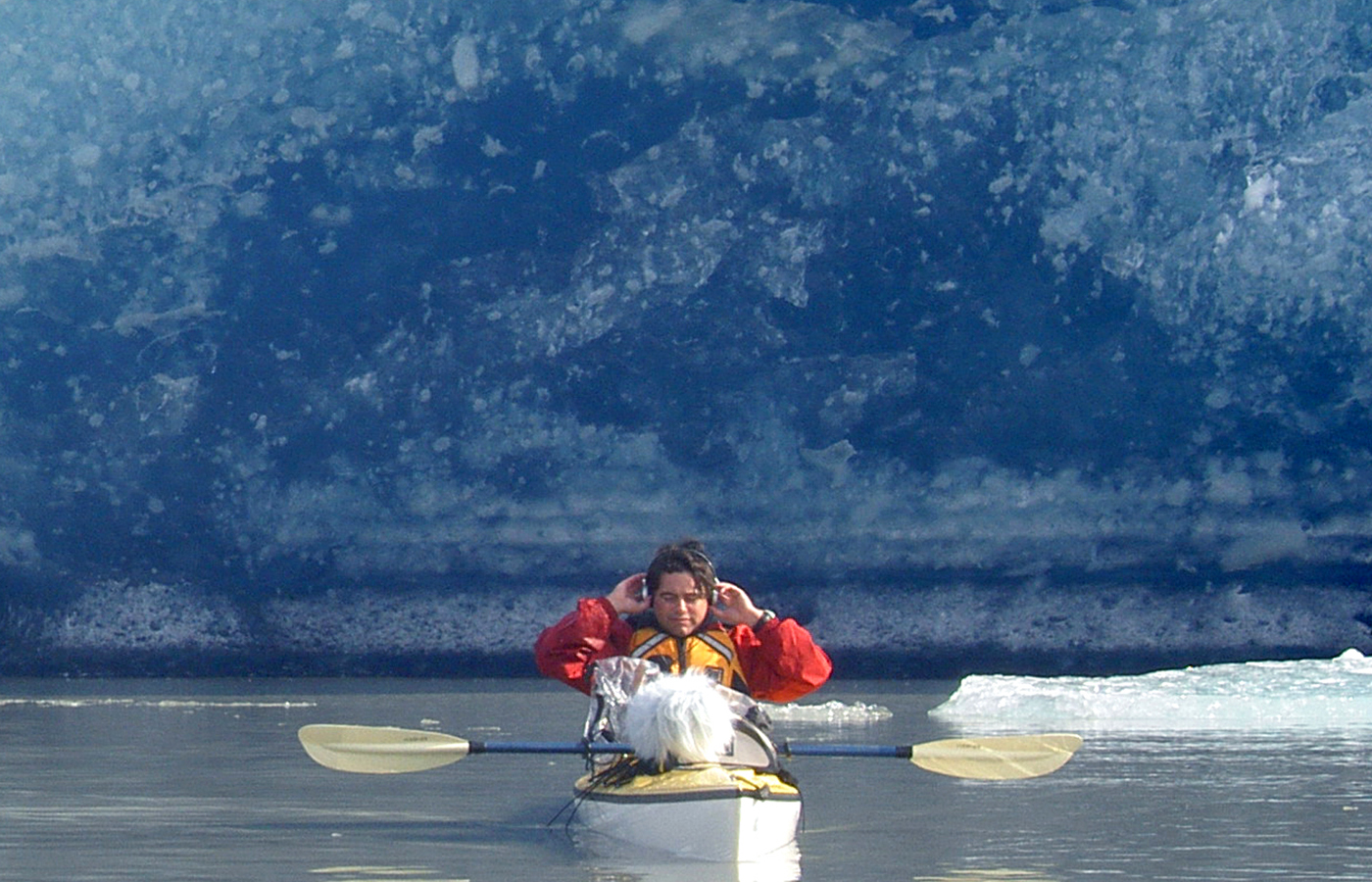 The Alaskan wilderness is experiencing a major meltdown, but not all will be lost. Thanks to a musician in Virginia, the sounds of Alaska’s glaciers are being recorded for posterity and woven into haunting compositions.
The Alaskan wilderness is experiencing a major meltdown, but not all will be lost. Thanks to a musician in Virginia, the sounds of Alaska’s glaciers are being recorded for posterity and woven into haunting compositions.
Nisrin's Story
From Stanford Storytelling Project | 20:19
A touching and honest non-narrated produced portrait of one of the first people to be detained at SFO (San Francisco International Airport) under the initial Trump travel ban order. Stanford PhD student traveling from Sudan: Nisrin Abdelrahman
- Playing
- Nisrin's Story
- From
- Stanford Storytelling Project
 Harvard graduate, Stanford PhD student:
Harvard graduate, Stanford PhD student:
https://anthropology.stanford.edu/people/nisrin-elamin-abdelrahman
See Transcript
Produced by staff and students at the Stanford Storytelling Project
https://storytelling.stanford.edu/
Music used from Freesound and original
The Sound of Science
From Outside Magazine | 19:40
Why environmental scientists are transforming big data into music.
- Playing
- The Sound of Science
- From
- Outside Magazine
 Scientists are compiling huge amounts of data on the impact of global warming, but the story of that data often gets lost. Enter Nik Sawe, a researcher at Stanford who is transforming big data into music. Two parts science, one art, data sonification turns the numbers we tend to ignore into a very human story, and could potentially help scientists identify new trends and correlations that are easier to hear than to see.
Scientists are compiling huge amounts of data on the impact of global warming, but the story of that data often gets lost. Enter Nik Sawe, a researcher at Stanford who is transforming big data into music. Two parts science, one art, data sonification turns the numbers we tend to ignore into a very human story, and could potentially help scientists identify new trends and correlations that are easier to hear than to see.
Episode 22: Through The Keyhole
From Wyoming Public Radio | Part of the HumaNature series | 20:12
Tyler Dunning went into the wild to distract himself from his grief…but ended up coming face to face with it instead.
- Playing
- Episode 22: Through The Keyhole
- From
- Wyoming Public Radio
 Tyler Dunning went into the wild to distract himself from his grief…but ended up coming face to face with it instead.
Tyler Dunning went into the wild to distract himself from his grief…but ended up coming face to face with it instead.
Episode 24: Bearded Ladies
From Wyoming Public Radio | Part of the HumaNature series | 21:01
This is the second episode in our three-part Science Camp series, where we’re exploring the human side of science. Paleobotanist Ellen Currano noticed a lack of other women in her field. So she decided to dress up as a man.
- Playing
- Episode 24: Bearded Ladies
- From
- Wyoming Public Radio
 This is the second episode in our three-part Science Camp series, where we’re exploring the human side of science. Paleobotanist Ellen Currano noticed a lack of other women in her field. So she decided to dress up as a man.
This is the second episode in our three-part Science Camp series, where we’re exploring the human side of science. Paleobotanist Ellen Currano noticed a lack of other women in her field. So she decided to dress up as a man.
Episode 76: American Job Guarantee
From Shira Rascoe | Part of the No Jargon series | 22:05
Development efforts in American cities often push out long-term residents and communities of color. Zeroing in on Baltimore, Professor Brandi Blessett breaks down the intentional and unintentional impacts of urban policy decisions.
- Playing
- Episode 76: American Job Guarantee
- From
- Shira Rascoe
Development efforts in American cities often push out long-term residents and communities of color. Zeroing in on Baltimore, Professor Brandi Blessett breaks down the intentional and unintentional impacts of urban policy decisions. For More on this Topic: Read more of her work on the impact of public administration on communities of color in her two-page brief. Check out Arnold Hirsch’s book on race and housing in Chicago, Making the Second Ghetto. Further Reading: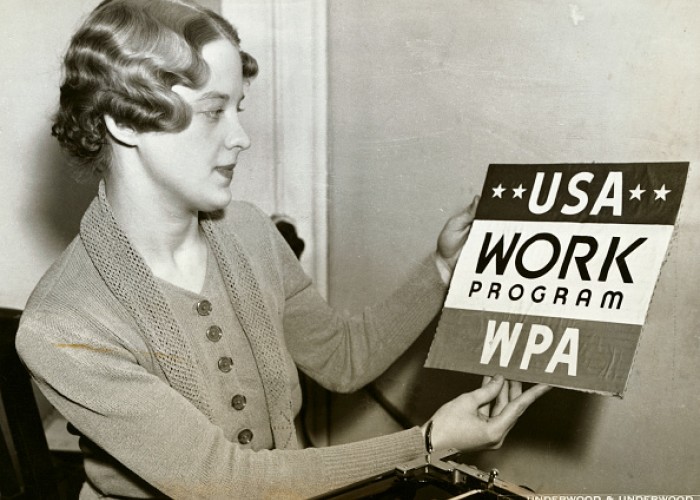
Follow us on Twitter @NoJargonPodcast.
Episode 74: Is Our Food Safe?
From Shira Rascoe | Part of the No Jargon series | 23:21
Rollbacks on federal regulations will put American’s food at risk. Professor Adam Sheingate explains the risks to consumers and the prospects for food safety in the coming years. He stresses that trust in government is key during food safety crises.
- Playing
- Episode 74: Is Our Food Safe?
- From
- Shira Rascoe
Rollbacks on federal regulations will put American’s food at risk. Professor Adam Sheingate explains the risks to consumers and the prospects for food safety in the coming years. He stresses that trust in government is key during food safety crises. For More on this Topic: Read his pieces in Democracy Journal, “In the Era of Trump, be Careful What You Eat” and “Still a Jungle.” Check out his two-page brief, Why America's Food is Still Not Safe. Further Reading: How Better U.S. Food Policies Could Foster Improved Health, Safer Jobs, and a More Sustainable Environment, Nicholas Freudenberg, City University of New York School of Public Health and Hunter College, SSN Basic Facts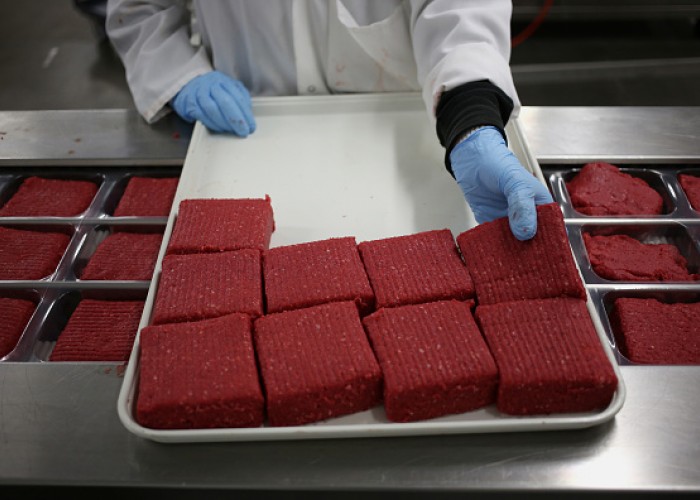
Follow us on Twitter @NoJargonPodcast.
Interview: Ryan Kelly
From Generation Anthropocene | 22:39
What if you you could scoop up a jar of seawater and use it to figure out what species were in that part of the ocean? Today we’re able to do that with a new scientific technique analyzing environmental DNA, or eDNA for short. In this episode, we talk to Ryan Kelly, an ecologist and lawyer at the forefront of eDNA research, about the technique itself, how it’s changing what we can learn about the ocean, and how that might impact policy.
- Playing
- Interview: Ryan Kelly
- From
- Generation Anthropocene
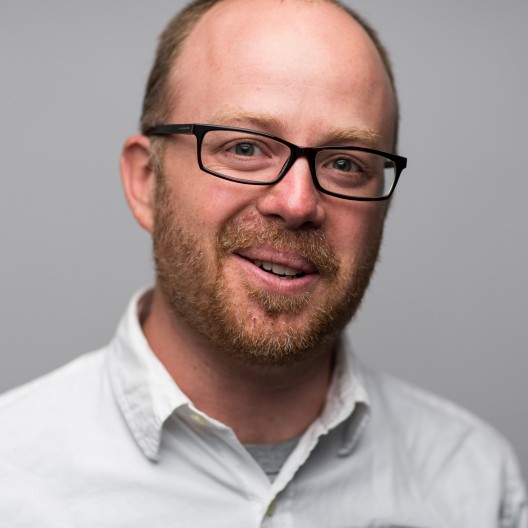
San Antonio Sounds: Music of the Mission City
From American Routes | Part of the American Routes Specials series | 01:59:00
featuring Flaco Jimenez, Augie Meyers, Max Baca and members of Sunny and the Sunliners

The great Texas river city is a mix of Mexican, German, Anglo and African American cultures, among others. Home to the Texas Conjunto Festival and the International Accordion Festival, San Antonio is best known for Tex-Mex or Téjano music played by squeeze box masters like Flaco Jiménez, Narciso Martinez and Mingo Saldivar among many. We’ll speak with Flaco, who in collaborations with Doug Sahm, Ry Cooder, and Los Super Seven, has carried the music worldwide. "Chicano brown-eyed soul" performers like Sunny and the Sunliners and other groups describe music that connected New Orleans and Louisiana Swamp Pop with San Antonio and East Los Angeles. We'll also talk with Vox organ legend Augie Meyers who worked in the high hippie era with Doug Sahm as part of the Sir Douglas Quintet and later in the Texas Tornadoes. The conversation comes full circle with Max Baca, the leader and bajo sexto player of Los Texmaniacs who was influenced by both Flaco and Doug Sahm The Grammy-winning family band sticks with tradition, but finds ways to include country, blues and rock . Plus music from Sam the Sham, Bob Wills and the Texas Playboys, Freddie Fender and Willie Nelson. Vamos!
Episode 51: Treason
From New Hampshire Public Radio | Part of the Civics 101 series | 04:00
'Treason' is a word that gets used a lot in political circles - but what does it actually mean?
- Playing
- Episode 51: Treason
- From
- New Hampshire Public Radio
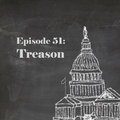
Episode #1 – TIME
From Radiotopia | Part of the Ways of Hearing series | 22:44
Contemplate the way digital audio employs a different sense of time than we use in our offline life.
- Playing
- Episode #1 – TIME
- From
- Radiotopia
 Contemplate the way digital audio – in music recording, and in radio and television broadcast – employs a different sense of time than we use in our offline life, a time that is more regular and yet less communal. Guests include: Ali Shaheed Muhammed of A Tribe Called Quest; and Joe Castiglione, the radio voice of the Boston Red Sox.
Contemplate the way digital audio – in music recording, and in radio and television broadcast – employs a different sense of time than we use in our offline life, a time that is more regular and yet less communal. Guests include: Ali Shaheed Muhammed of A Tribe Called Quest; and Joe Castiglione, the radio voice of the Boston Red Sox.
The Last Thing You See
From Roger McDonough | 14:21
An exploration of "forensic optography" - the theory advanced by some 19th and early 20th c. detectives that you could obtain an image of a murderer by photographing the retina of a murder victim. The belief was that the last thing you saw before you died was fixed on your retina. The idea has its origin in some bizarre experiments...with rabbits. Featuring Simon Ings, author of A Natural History of Seeing, and Arthur Conan Doyle scholar Michael Homer.
- Playing
- The Last Thing You See
- From
- Roger McDonough
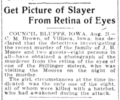 An exploration of "forensic optography" - the theory advanced by some 19th and early 20th c. detectives that you could obtain an image of a murderer by photographing the retina of a murder victim. The belief was that the last thing you saw before you died was fixed on your retina. The idea has its origin in some bizarre experiments...with rabbits. Featuring Simon Ings, author of A Natural History of Seeing, and Arthur Conan Doyle scholar Michael Homer.
An exploration of "forensic optography" - the theory advanced by some 19th and early 20th c. detectives that you could obtain an image of a murderer by photographing the retina of a murder victim. The belief was that the last thing you saw before you died was fixed on your retina. The idea has its origin in some bizarre experiments...with rabbits. Featuring Simon Ings, author of A Natural History of Seeing, and Arthur Conan Doyle scholar Michael Homer.
Episode 28: Things That Go Squeak In The Night
From Wyoming Public Radio | Part of the HumaNature series | 14:43
When the Massaro family traded life on dry land for a life at sea, they encountered some unexpected company.
 When the Massaro family traded life on dry land for a life at sea, they encountered some unexpected company.
When the Massaro family traded life on dry land for a life at sea, they encountered some unexpected company.
My Life as a Wild Turkey (Half Hour)
From With Good Reason | Part of the Thanksgiving Specials series | 28:58
All about turkeys: how a naturalist became a wild turkey mother, a pilot gives a play by play of the moves of the wild turkey in flight. And more...
- Playing
- My Life as a Wild Turkey (Half Hour)
- From
- With Good Reason
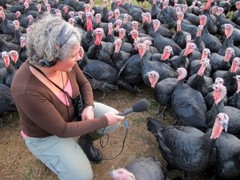 World-renowned naturalist Joe Hutto , subject of the Emmy winning BBC documentary "My Life As a Turkey", discusses how he became a wild turkey mother in the hammocks of Florida. Plus: Fourth-generation pilot Eric Walden gives a play-by-play of the ninja-like moves of the wild turkey—mid-air. And: The once-scorned bronze-feathered turkey is making a comeback, with the help of organic, free-range farmers like Paul Kelly. Also: Jay Sullivan sends his students off to Thanksgiving Break with a poem about a young engineer’s ingenuity and of course, a turkey.
World-renowned naturalist Joe Hutto , subject of the Emmy winning BBC documentary "My Life As a Turkey", discusses how he became a wild turkey mother in the hammocks of Florida. Plus: Fourth-generation pilot Eric Walden gives a play-by-play of the ninja-like moves of the wild turkey—mid-air. And: The once-scorned bronze-feathered turkey is making a comeback, with the help of organic, free-range farmers like Paul Kelly. Also: Jay Sullivan sends his students off to Thanksgiving Break with a poem about a young engineer’s ingenuity and of course, a turkey.
Mindfulness as a way to manage stress in today's world
From WTIP | Part of the The Roadhouse series | 22:10
With so many terrible events happening in the world lately, it's a great time to hear from someone who can help us learn to manage our stress. Doug Kennedy is the leader of the Mindfulness in Education Initiative at the Earl E. Bakken Center for Spirituality & Healing at the University of Minnesota. He talked with WTIP's Rae Lemke about mindfulness, what it is, and how it can help us deal with sadness and stress.
 With so many terrible events happening in the world lately, it's a great time to hear from someone who can help us learn to manage our stress. Doug Kennedy is the leader of the Mindfulness in Education Initiative at the Earl E. Bakken Center for Spirituality & Healing at the University of Minnesota. He talked with WTIP's Rae Lemke about mindfulness, what it is, and how it can help us deal with sadness and stress.
With so many terrible events happening in the world lately, it's a great time to hear from someone who can help us learn to manage our stress. Doug Kennedy is the leader of the Mindfulness in Education Initiative at the Earl E. Bakken Center for Spirituality & Healing at the University of Minnesota. He talked with WTIP's Rae Lemke about mindfulness, what it is, and how it can help us deal with sadness and stress.
Just Add Water: Life in Arizona
From Terrascope Radio | Part of the Terrascope Radio Major Features series | 22:09
A light-hearted but serious exploration of how water is used, conserved and transported in Arizona.
- Playing
- Just Add Water: Life in Arizona
- From
- Terrascope Radio

Jaron's Story of Coming Out
From KUNM | 05:48
Youth producer Jaron Kie shares his story of coming out of the closet.
- Playing
- Jaron's Story of Coming Out
- From
- KUNM
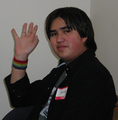 Jaron Kie of KUNM's Youth Radio recorded a commentary about coming out to his family as a gay teen from Laguna Pueblo in New Mexico. He explains the struggles of keeping his sexuality secret and how his family ultimately came to accept that he's gay.
Jaron Kie of KUNM's Youth Radio recorded a commentary about coming out to his family as a gay teen from Laguna Pueblo in New Mexico. He explains the struggles of keeping his sexuality secret and how his family ultimately came to accept that he's gay.
#163 - Stepping in with the Facts
From HowSound | 18:04
A recent story on NPR about the Confederate flag got me wondering about the practice of correcting interviewees in narration. North Country Public Radio's Zach Hirsch produced the story and he explains the why he felt challenging the interviewee's viewpoints was necessary.
- Playing
- #163 - Stepping in with the Facts
- From
- HowSound

Zach Hirsch’s recent story on NPR is proof you can find national stories right in your neighborhood. Zach recorded a fairly simple chat in a backyard and turned it into one of the most important stories he says he’s ever produced.
Of course, no radio story is ever “simple.” For starters, the conversation he recorded with neighbors was about the Confederate flag. Zach said it was a bold move on his part to reach out and talk to someone displaying that flag.
n the end, the bravery, the communication system he set up with his partner, and thinking of his mic as a shield may have been a case of overpreparing. The people who spoke turned out to be, as Zach puts it, sweet.
But then, after the interview, Zach spent a great deal of time fact-checking the people he talked to. He included what he learned in his narration. And, that caught my ear when I heard the story. So, I reached out to Zach with a handful of my own questions: What obligation do reporters have with interviewees post-interview fact checking? What if the bulk of a story consists of correcting interviewees? Can’t people simply say what’s true to them? Zach tackles these questions and more on this episode of HowSound.
Scene on Radio #3: The (High School) Mascot Wars
From The Center for Documentary Studies | Part of the Scene On Radio series | 24:51
Two small towns, one in Idaho, the other in Upstate New York, debate whether to stop calling their high school sports teams the Redskins.
 Yes, there's that NFL team in our Nation's Capital. But across the country, some sixty high schools still use the Redskins name, too. We visit two small towns that wrestled over whether to change the name, with different results.
Yes, there's that NFL team in our Nation's Capital. But across the country, some sixty high schools still use the Redskins name, too. We visit two small towns that wrestled over whether to change the name, with different results.
Dispatch
From KUER | Part of the More To Say series | 12:02
When you have an emergency, you call 911. A dispatcher answers and calmly sends help. But dispatchers are real people too, trying to make sense of what's happening and keep everyone safe. KUER's Erik Neumann walks us through one phone call that changed the life of an emergency dispatcher forever.
 When you have an emergency, you call 911. A dispatcher answers and calmly sends help. But dispatchers are real people too, trying to make sense of what's happening and keep everyone safe. KUER's Erik Neumann walks us through one phone call that changed the life of an emergency dispatcher forever.
When you have an emergency, you call 911. A dispatcher answers and calmly sends help. But dispatchers are real people too, trying to make sense of what's happening and keep everyone safe. KUER's Erik Neumann walks us through one phone call that changed the life of an emergency dispatcher forever.
One man's 'Search for America'--listening to what ordinary folks think about democracy
From WTIP | Part of the The Roadhouse series | 15:40
Lars Hasselblad-Torres, a Vermont writer, artist and educator, is making a road trip across the country to find out what regular people have to say about democracy and about making our country 'a more perfect union'. WTIP's Dave TerSteeg caught up with him somewhere near the West Coast to learn more about his project, "Search for America," and what he's finding so far.

#166 - Spurs and Horse Snouts
From HowSound | 17:37
Two solidly produced, fun stories from students at the Transom Traveling Workshop in Marfa, Texas featuring.... well, the title gives it away. Both are well worth your listen.
- Playing
- #166 - Spurs and Horse Snouts
- From
- HowSound

One came from Australia. Another from D.C. Another from Aspen. Still another from San Antonio. All were part of a class of ten people from all over who recently attended a Transom Traveling Workshop in Marfa, Texas hosted by Marfa Public Radio .
Some students were full time reporters. Others had dabbled at producing their own podcasts or stories for stations. A couple had not made anything before. They all produced a profile of someone living in the area.
Let’s just say it was a blast. I mean, think about it. Ten students, ten stories, one week. Marfa, Texas. Hello? What’s not to like??!
On this episode of HowSound, I’m highlighting a couple of pieces produced at the workshop because of their great use of sound and on-scene reporting. They’re really satisfying to listen to. The producers are Andrea Gibbs , a host on a weekly Australian Broadcasting Corporation radio program who has never reported in the field or produced her own story before and Margot Wohl who makes a podcast for KPBS in San Diego.
#166 - Spurs and Horse Snouts
From HowSound | 17:37
Two solidly produced, fun stories from students at the Transom Traveling Workshop in Marfa, Texas featuring.... well, the title gives it away. Both are well worth your listen.
- Playing
- #166 - Spurs and Horse Snouts
- From
- HowSound

One came from Australia. Another from D.C. Another from Aspen. Still another from San Antonio. All were part of a class of ten people from all over who recently attended a Transom Traveling Workshop in Marfa, Texas hosted by Marfa Public Radio .
Some students were full time reporters. Others had dabbled at producing their own podcasts or stories for stations. A couple had not made anything before. They all produced a profile of someone living in the area.
Let’s just say it was a blast. I mean, think about it. Ten students, ten stories, one week. Marfa, Texas. Hello? What’s not to like??!
On this episode of HowSound, I’m highlighting a couple of pieces produced at the workshop because of their great use of sound and on-scene reporting. They’re really satisfying to listen to. The producers are Andrea Gibbs , a host on a weekly Australian Broadcasting Corporation radio program who has never reported in the field or produced her own story before and Margot Wohl who makes a podcast for KPBS in San Diego.
Matter and Desire: An Erotic Ecology
From John Shuck | Part of the Progressive Spirit series | 54:01
Biologist and Philosopher, Andreas Weber, reframes ecology as a tender practice of forging relationships, of yearning for connections, and of expressing these desires through our bodies. Being alive is an erotic process—constantly transforming the self through contact with others, desiring ever more life.
- Playing
- Matter and Desire: An Erotic Ecology
- From
- John Shuck

Andreas Weber is a Berlin-based philosopher, biologist, and writer. He holds degrees in marine biology and cultural studies. He proposes the development of a “poetic ecology” which intimately attaches our species to every being and underpins the entire range of human experience. He argues that feelings and emotions, far from being superfluous to the study of organisms, are the very foundation of life.
His books in English include: Enlivenment: Towards a Fundamental Shift in the Concepts of Nature, Culture and Politics (2013); The Biology of Wonder: Aliveness, Feeling, and the Metamorphosis of Science (2016); and Biopoetics: Towards an Existential Ecology (2016). Weber regularly contributes to major newspapers and magazines, such as National Geographic and has won a number of awards for his writing.
His latest book and our subject today is Matter and Desire: An Erotic Ecology.
The Addict's Mom
From KUER | Part of the More To Say series | 11:37
If you want to understand the opioid crisis, try talking to an addict's mom. KUER's Erik Neumann spent an evening at Village Inn, listening to honest, heartbreaking, and humorous stories from women who struggle alongside their drug-addicted children.
- Playing
- The Addict's Mom
- From
- KUER
 If you want to understand the opioid crisis, try talking to an addict's mom. KUER's Erik Neumann spent an evening at Village Inn, listening to honest, heartbreaking, and humorous stories from women who struggle alongside their drug-addicted children.
If you want to understand the opioid crisis, try talking to an addict's mom. KUER's Erik Neumann spent an evening at Village Inn, listening to honest, heartbreaking, and humorous stories from women who struggle alongside their drug-addicted children.
The National Endowment for the Arts celebrates the Delta Blues Museum!
From National Endowment for the Arts | Part of the Art Works series | 22:42
Executive Director of the Delta Blues Museum Shelley Ritter keeps the blues alive and honors its history.

The Blues were created by African Americans in the Deep South around the end of the 19th century. With its roots in African musical traditions, African-American work songs, and spirituals, the blues form is characterized by call-and-response pattern, the blues scale and specific chord progressions, of which the twelve-bar blues is the most common. While the blues is the cornerstone of American music and at the heart of much jazz, rhythm and blues and rock and roll, it was originally the music of African American working people in the rural south. Musicologist Robert Palmer noted the blues was both “a continuation of deep and tenacious African traditions and a creative response to a brutal and desperate situation.”
The Mississippi Delta is known as ”the land where the blues began.” And at its heart is Clarksdale, located at the intersection of Highways 61 and 49 (“the crossroads”), Times have changed in the Delta, but the area still remains a hotbed for the blues, with nightly music, great music festivals throughout the year, and the world’s first museum devoted exclusively to the blues: the Delta Blues Museum. The Delta Blues Museum is one of the few museums in a rural farming area in the South. and it's become a cultural center, welcoming visitors from abroad and providing area residents with music and programming. With some help from the National Endowment for the Arts, the Delta Blues Museum created an award-winning arts and education program that serves the young people in the community. And like the blues itself, it happened organically by filling a need.
Taming Energy Vampires
From Wendy Ring | 23:21
The average household has more than 40 appliances that use electricity when they're off. We help you find and subdue them.
- Playing
- Taming Energy Vampires
- From
- Wendy Ring
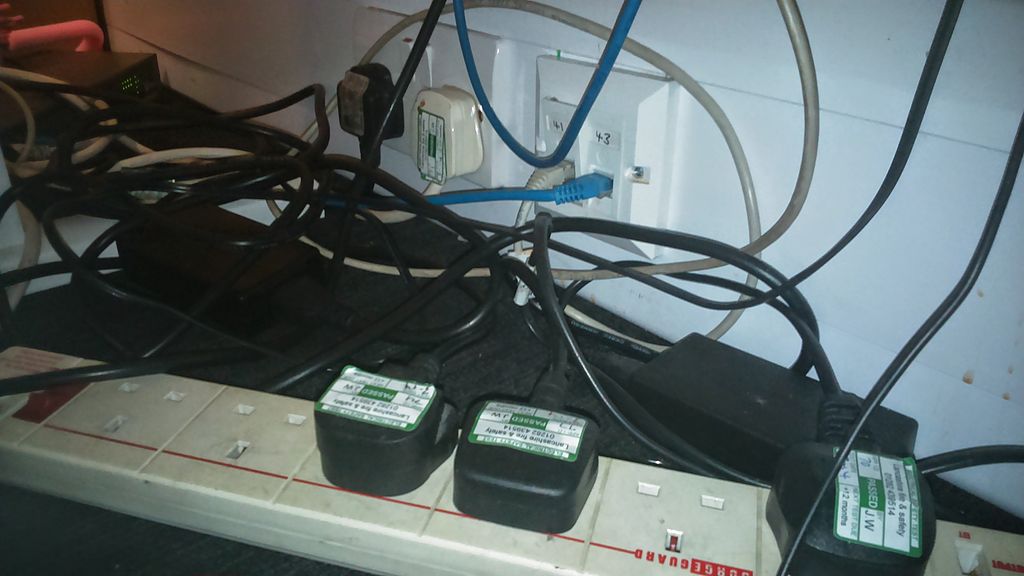 The average household has more than 40 appliances that use electricity when they're off. We help you find them and stanch the flow. Along the way: the dining habits of vampire bats and spiders, a home energy audit with a vampire, and a psychologist explains why its so hard to unplug. Guests: David Kaneda, Michael Klopfer, Reuven Sussman and Noah Horowitz.
The average household has more than 40 appliances that use electricity when they're off. We help you find them and stanch the flow. Along the way: the dining habits of vampire bats and spiders, a home energy audit with a vampire, and a psychologist explains why its so hard to unplug. Guests: David Kaneda, Michael Klopfer, Reuven Sussman and Noah Horowitz.
#167 - Don't Write, Tell
From HowSound | 12:01
Planet Money's Noel King says the best way to write for radio is to not write. Instead? Tell.
- Playing
- #167 - Don't Write, Tell
- From
- HowSound

Last fall, I heard a story on NPR about flood insurance and I thought “Oh dear. This is going to be humdrum.”
Noel King produced the story for Planet Money . She’s a reporter there. And even she agrees. National Flood Insurance Policy is not a riveting topic. But, despite that, Noel nailed it. Her three and a half minute piece was a great listen.
Why? Her writing. Only she says it’s not writing, it’s telling. Noel says if you sit down at a computer and start writing a radio story, there’s a good chance it’ll sound just like that, writing. Instead, for radio, a narrator should sound like they’re telling a story. In fact, she goes so far to say that the narrator should even feel what they’re saying. Not too much, of course! But some.
On this episode of HowSound, Noel dissects the story she wrote — told, rather — and how she came to approach her writing for radio as telling.
#169 - The Journalism of Empathy
From HowSound | 18:01
The Promise," a podcast from WPLN in Nashville, is an inspiring example of the journalism of empathy. And, it's easily some of the best local reporting I've heard in a long time. Meribah Knight explores this approach to reporting on this HowSound.
- Playing
- #169 - The Journalism of Empathy
- From
- HowSound

I’m going to borrow a quote from Ted Conover who, in turn, borrowed it from Harper Lee’s To Kill a Mockingbird.
“If you just learn a single trick, Scout, you’ll get along a lot better with all kinds of folks. You never really understand a person until you consider things from his point of view … until you climb inside of his skin and walk around in it.”
That notion is a central tenet of “the journalism of empathy.” (Conover quoted Lee in his syllabus for a course of that name at NYU.) Practitioners of this type of reporting include Adrian Nicole LeBlanc , Katherine Boo and Alex Kotlowitz . In radio, I’d say the practice includes producers like David Isay and Jay Allison among many others.
A brand new podcast from WPLN is an excellent example of the journalism of empathy. It’s produced by Meribah Knight who cites Kotlowitz and Isay among her heroes.
Meribah, my guest on HowSound, spent nearly a year reporting on The James A. Cayce Homes, Nashville’s largest public housing project. The city is poised to re-develop Cayce, refashioning it into a mixed-income neighborhood. The city has promised not to uproot the community in the process. Meribah pledged to document that promise, hence the podcast’s name, The Promise .
The Promise is easily some of the best local reporting I’ve heard in a long time. It’s enterprising, comprehensive, and effectively serves public radio’s mission. On top of that, each episode is a good story, well told.
Women in Greenpeace History
From Greenpeace Podcast | Part of the Greenpeace Podcast Segments series | 06:32
Hear stories about women in the early days of Greenpeace: heroines such as Ann Marie Horn and Bobbi Hunter, as well as the difficulties still present in sharing the stories of women in our movements.
- Playing
- Women in Greenpeace History
- From
- Greenpeace Podcast
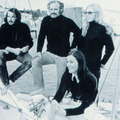 Hear stories about women in the early days of Greenpeace: heroines such as Ann Marie Horn and Bobbi Hunter, as well as the difficulties still present in sharing the stories of women in our movements.
Hear stories about women in the early days of Greenpeace: heroines such as Ann Marie Horn and Bobbi Hunter, as well as the difficulties still present in sharing the stories of women in our movements.
Hate Crimes
From Media for the Public Good, Inc. - OutCasting Media | Part of the OutCasting Overtime series | 07:21
OutCasters Andrea and Dhruv reflect on anti-LGBTQ hate crimes in an essay read by Andrea.
 LGBTQ people are at disproportionate risk of becoming victims of hate crimes. In an essay ready by OutCaster Andrea and written by OutCasters Andrea and Dhruv (right), they reflect on the murder of Matthew Shepard 20 years ago and the lack of hate crime laws at the time. They consider how the incidences of hate crimes today affect LGBTQ youth, who must grow up knowing that there are still people who hate them for who they are.
LGBTQ people are at disproportionate risk of becoming victims of hate crimes. In an essay ready by OutCaster Andrea and written by OutCasters Andrea and Dhruv (right), they reflect on the murder of Matthew Shepard 20 years ago and the lack of hate crime laws at the time. They consider how the incidences of hate crimes today affect LGBTQ youth, who must grow up knowing that there are still people who hate them for who they are.
The Bad Modern History of Farming
From KQAL | Part of the Culture Clique series | 19:45
On this episode of Culture Clique, we talk with agricultural specialist Dale Hadler about modern farming practices. Dale discusses farming as a holistic system versus the farm as a production factory.
- Playing
- The Bad Modern History of Farming
- From
- KQAL
 On this episode of Culture Clique, we talk with agricultural specialist Dale Hadler about modern farming practices. Dale discusses farming as a holistic system versus the farm as a production factory.
On this episode of Culture Clique, we talk with agricultural specialist Dale Hadler about modern farming practices. Dale discusses farming as a holistic system versus the farm as a production factory.
Healing in an Era of Mass Shootings (half)
From With Good Reason | Part of the With Good Reason: Weekly Half Hour Long Episodes series | 28:59
Assessing the legacy of Virginia Tech, 10 years later -- Profiling mass shooters
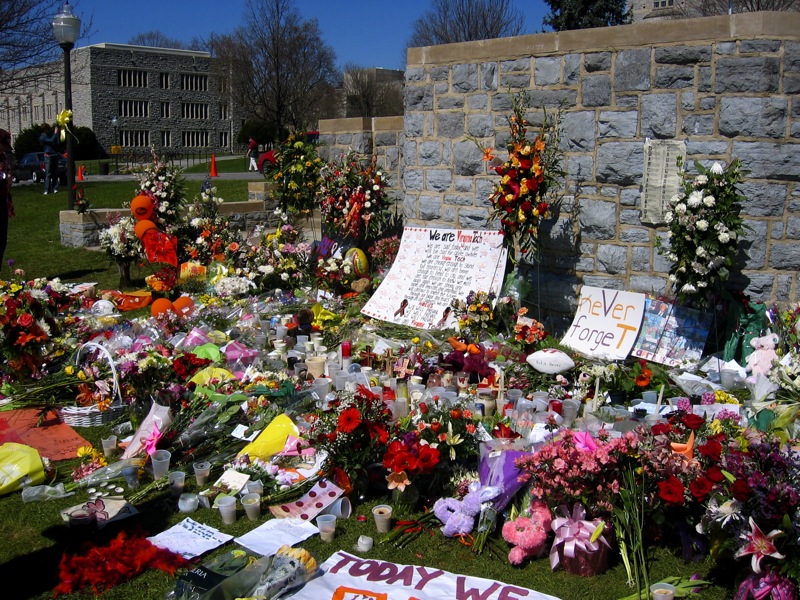 It’s been 10 years since the massacre on the campus of Virginia Tech. Journalist Tom Kapsidelis is speaking with survivors for his forthcoming book, Higher Aim: Guns, Safety and Healing in the Era of Mass Shootings. Also: One of the biggest misconceptions of school shooters is that they are all mentally ill kids who are evil from birth. Philip Mongan says most of them live normal lives until they experience triggers and turn violent over months or years.
It’s been 10 years since the massacre on the campus of Virginia Tech. Journalist Tom Kapsidelis is speaking with survivors for his forthcoming book, Higher Aim: Guns, Safety and Healing in the Era of Mass Shootings. Also: One of the biggest misconceptions of school shooters is that they are all mentally ill kids who are evil from birth. Philip Mongan says most of them live normal lives until they experience triggers and turn violent over months or years.
Shifting Sands (half)
From With Good Reason | Part of the With Good Reason: Weekly Half Hour Long Episodes series | 28:59
How the US is getting it wrong in the Middle East - The far-right takeover of Eastern Europe
- Playing
- Shifting Sands (half)
- From
- With Good Reason
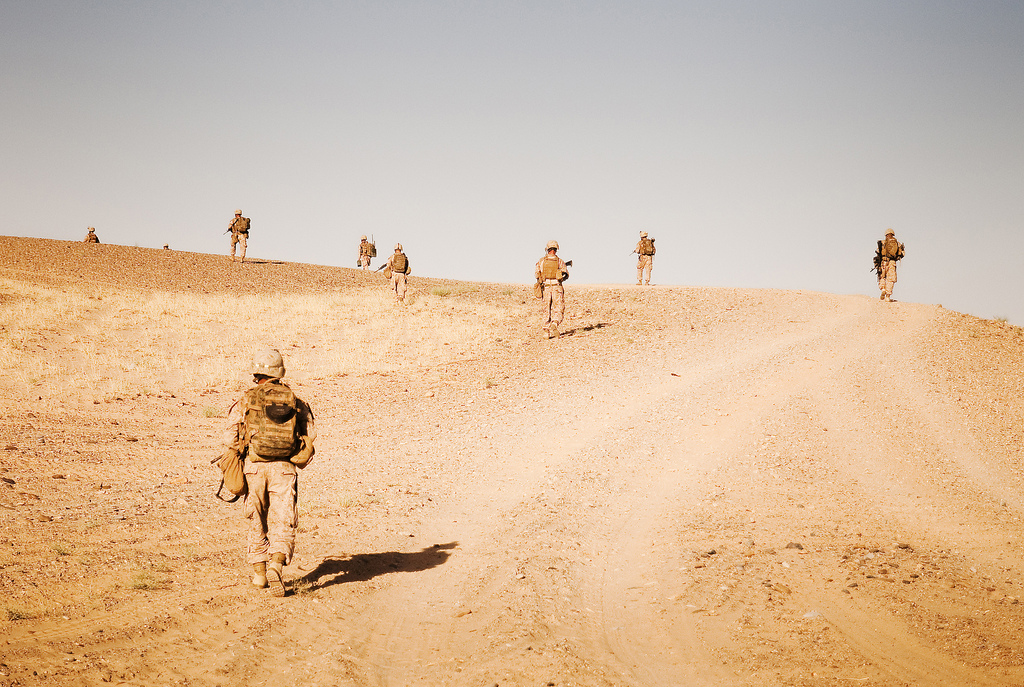 Glenn Hastedt and Bernd Kaussler are the authors of a new book that offers a realist critique of US foreign policy toward the Middle East in the past decade. And: Far right populist parties have been on the rise in Europe, from France’s National Front to Bulgaria’s Attack Party. Tatiana Rizova explores how these parties are gaining ground and discusses whether power will continue to swing in their direction.
Glenn Hastedt and Bernd Kaussler are the authors of a new book that offers a realist critique of US foreign policy toward the Middle East in the past decade. And: Far right populist parties have been on the rise in Europe, from France’s National Front to Bulgaria’s Attack Party. Tatiana Rizova explores how these parties are gaining ground and discusses whether power will continue to swing in their direction.
Love & Drugs (half)
From With Good Reason | Part of the With Good Reason: Weekly Half Hour Long Episodes series | 28:59
How pop culture portrays romance and addiction -- when bad breakups bring out addictive personalities
- Playing
- Love & Drugs (half)
- From
- With Good Reason
 Jessica Salvatore examines the relationship between romance and addiction, and how popular culture portrays this relationship in the media. Plus: Psychiatrist Kenneth Kendler discusses what to look for when a genetic predisposition to alcohol abuse is kick-started with a divorce.
Jessica Salvatore examines the relationship between romance and addiction, and how popular culture portrays this relationship in the media. Plus: Psychiatrist Kenneth Kendler discusses what to look for when a genetic predisposition to alcohol abuse is kick-started with a divorce.
Carol Dunbar
From Northern Community Radio - KAXE & KBXE, Minnesota | Part of the Wordish series | 03:21
Writer Carol Dunbar has more than one power issue as she shares her essay "Generator" with us on Wordish.
 Writer Carol Dunbar has more than one power issue as she shares her essay "Generator" with us on Wordish.
Writer Carol Dunbar has more than one power issue as she shares her essay "Generator" with us on Wordish.
Grocery Store Tours
From KQAL | Part of the Culture Clique series | 19:24
On this episode of Culture Clique we go on a student led tour of a local grocery store to learn about heart healthy foods and the Mediterranean diet. We'll learn how to read food labels in order to make the best food choices.
- Playing
- Grocery Store Tours
- From
- KQAL
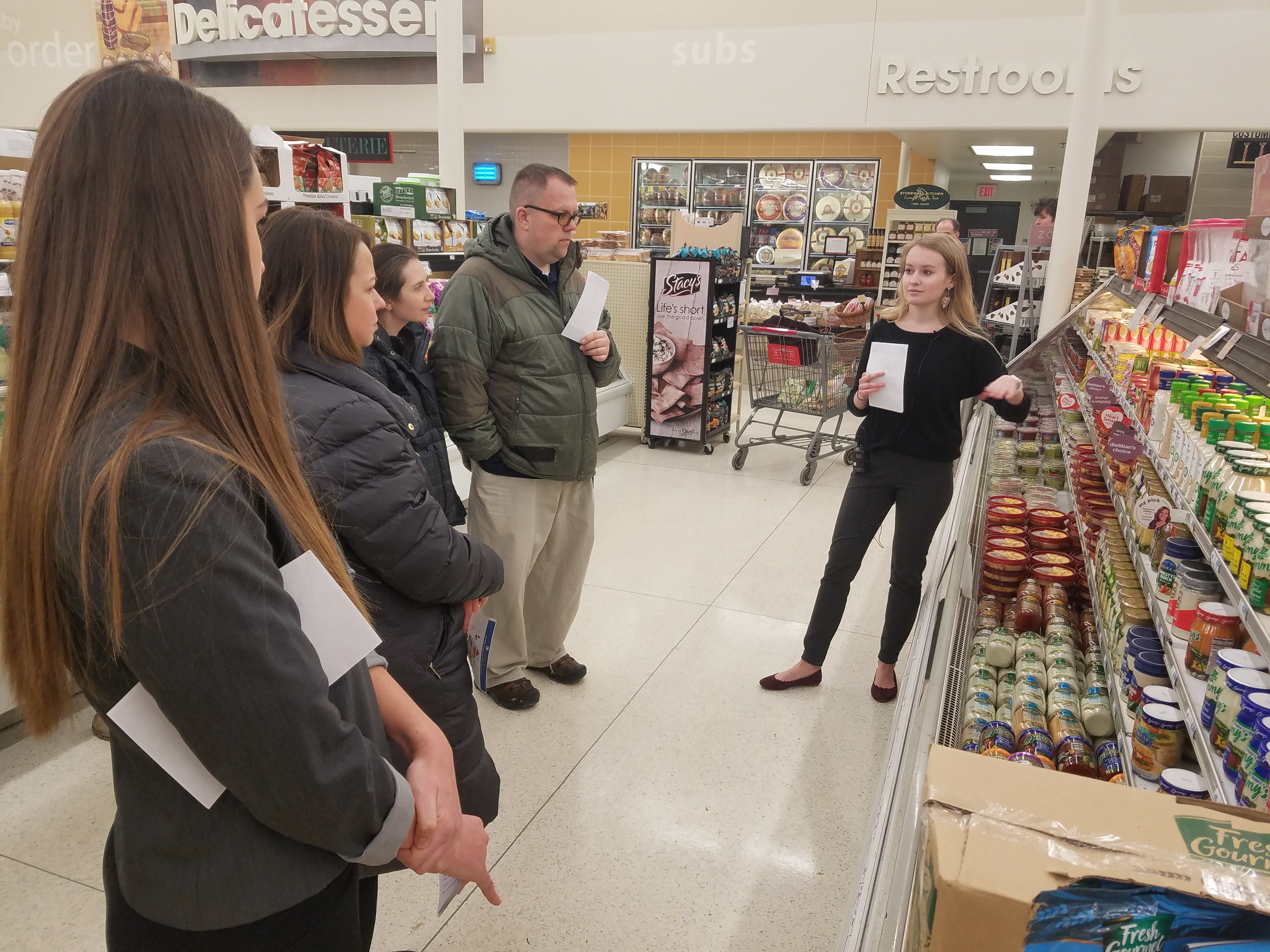 On this episode of Culture Clique we go on a student led tour of a local grocery store to learn about heart healthy foods and the Mediterranean diet. We'll learn how to read food labels in order to make the best food choices.
On this episode of Culture Clique we go on a student led tour of a local grocery store to learn about heart healthy foods and the Mediterranean diet. We'll learn how to read food labels in order to make the best food choices.
LIVING IN AN AMERICAN INTERNMENT CAMP
From Michelle Harven | Part of the Legacy series | 29:03
Mary Tamaki Murakami talks about life in an internment camp during World War II and why she sees parallels in today’s treatment of Muslim-Americans.
- Playing
- LIVING IN AN AMERICAN INTERNMENT CAMP
- From
- Michelle Harven
 Mary Tamaki Murakami was still swooning over pop stars and worrying about her homework when her life suddenly took a very real turn. Immediately after the Pearl Harbor attack on December 7, 1941, she experienced a crackdown in her own San Francisco neighborhood. She was forced into an internment camp with her family, and experienced the type of descrimination that was enforced by the Supreme Court. Today, she shares her experience with schools and organizations because she fears history is already repeating. As more parallels emerge between her own experience and new policies affecting Muslim-Americans, Mary hopes her story can serve as a warning.
Mary Tamaki Murakami was still swooning over pop stars and worrying about her homework when her life suddenly took a very real turn. Immediately after the Pearl Harbor attack on December 7, 1941, she experienced a crackdown in her own San Francisco neighborhood. She was forced into an internment camp with her family, and experienced the type of descrimination that was enforced by the Supreme Court. Today, she shares her experience with schools and organizations because she fears history is already repeating. As more parallels emerge between her own experience and new policies affecting Muslim-Americans, Mary hopes her story can serve as a warning.
ZETA PODCAST SERIES (Series)
Produced by Marcos Nájera
Most recent piece in this series:
Episode #1: "Who the F is that?"
From Marcos Nájera | Part of the ZETA PODCAST SERIES series | 13:29
- Playing
- Episode #1: "Who the F is that?"
- From
- Marcos Nájera
 Host Marcos Nájera introduces us to the Zeta podcast series. Who is Oscar Zeta Acosta? If you know, you are way ahead of Nájera who admits the US public school system failed him and his fellow Latinos. The good news is that Nájera insists this podcast series is opportunity for you, me, he and we to learn once and for all about this Chicano luminary that history forgot.
Host Marcos Nájera introduces us to the Zeta podcast series. Who is Oscar Zeta Acosta? If you know, you are way ahead of Nájera who admits the US public school system failed him and his fellow Latinos. The good news is that Nájera insists this podcast series is opportunity for you, me, he and we to learn once and for all about this Chicano luminary that history forgot.
People interviewed in this podcast are:
1) Phillip Rodriguez, Director/Producer/Writer of the PBS documentary "The Rise and Fall of the Brown Buffalo".
More information on the documentary can be found here: www.BrownBuffaloFilm.com
2) Guillermo Gomez-Pena, MacArthur genius and international performance artist.
3) Anita Acosta, Oscar Zeta Acosta's sister.
4th of July Fireworks
From Hans Anderson | 03:27
A humorous piece about impressing the neighborhood with your fireworks.
- Playing
- 4th of July Fireworks
- From
- Hans Anderson
 Humorous piece about setting off fireworks on the 4th. It's good to know going in that this is about Fireworks. Probably should mention that in the intro if you use this piece. One piece is dry (no music bed) the other had some music. Take your pick.
Humorous piece about setting off fireworks on the 4th. It's good to know going in that this is about Fireworks. Probably should mention that in the intro if you use this piece. One piece is dry (no music bed) the other had some music. Take your pick.
Andy and Dirk
From Hans Anderson | 05:08
A small town chill moment
- Playing
- Andy and Dirk
- From
- Hans Anderson
 When I was in high school headbanger Andy and cowboy Dirk were on two sides of the fence and Dirk was always looking to thump Andy. It was pot v. Coors, Marlboro v. Copenhagen, Metal v. Nashville. Andy v. Dirk. But there is always a greater evil to band against.
When I was in high school headbanger Andy and cowboy Dirk were on two sides of the fence and Dirk was always looking to thump Andy. It was pot v. Coors, Marlboro v. Copenhagen, Metal v. Nashville. Andy v. Dirk. But there is always a greater evil to band against.
'Why him and not me?' Songwriting to mend the wounds of war
From American Homefront Project | 04:03
For her new album, Nashville singer-songwriter Mary Gauthier collaborated with veterans to write songs about war, service, and life after the military.

Joshua Geartz joined the Army after high school. It was 1999, he had some uncles who served, and he thought, "college wasn't for me," Geartz said.
Fast-forward a few years to Geartz driving a truck on his last night of deployment in Iraq.
"My vehicle was hit with a roadside bomb which left me with a brain injury and some spinal cord damage," he said. "Now I typically rely on a wheelchair. I'm not wheelchair-bound. But it makes things difficult."
The change was fast and jarring, and Geartz isolated himself, trying to deal with the new challenges on his own. "Going from being a leader in the military to a point where it was hard to even care for yourself is really hard to deal with," he said.
It was those psychological wounds that nearly killed him. At one point, after returning home to his wife Lisa and two sons in New York, he attempted suicide. "I felt like I was a burden," he remembered. "It was almost like I wanted my family to be able to laugh again."
Lisa was looking for help when she came across a news article about a non-profit group that pairs professional songwriters with veterans.
"Knowing my love for music, she thought it would be something I would maybe go to," Geartz said. "Especially because she was able to attend with me."
Using music to find 'what the soul is trying to say'
Geartz had never written a song before, but he entered the SongwritingWith:Soldiers program and met Nashville singer-songwriter Mary Gauthier. She's been volunteering as a mentor for about five years, facilitating artistic collaboration between the military and civilian worlds.
"Soldiers are trained not to be vulnerable, but when they come home, they've got to learn it," Gauthier said during a recent tour stop at McCabe's Guitar Shop in Santa Monica, Cal. "Part of telling the story is being uncomfortably vulnerable. But that's what songs do."
The organization holds several retreats a year, and they're free to veterans and their partners. At the retreats, a handful of professional songwriters play a show so the veterans can get to know their work.
"They pick who they want to write with. Whose music resonates," Gauthier said. "We have to get each of them their own song. That's our commitment to them."
Each of the pro songwriters has been at the craft for decades, "and we can tell quickly what the soul is trying to say," she said.
Gauthier starts the writing process by asking her veteran collaborator to recount stories from the service as if he or she were describing a movie scene. She plays a melody on guitar that correlates with the emotion of the story.
"Music is so core to our experience that if the songwriter can find the melody that correlates with the trauma that the veteran is trapped in, it helps to move that story into language," she said.
Before getting involved in the program, Gauthier recalled being guilty of stereotyping members of the military. She chalked it up to the growing military-civilian divide. Since the end of the draft, fewer and fewer Americans know a member of the military.
"I had the stereotype of the conservative straight white guy who likes to shoot weapons. That's not who I'm meeting," she said. "And that's not even nice to think that. But I didn't know until I experienced it firsthand."
A soundtrack of the veteran experience
Gauthier's tenth album, Rifles and Rosary Beads, is entirely co-written with veterans and families from the program.
The eleven tracks dig deep into the veteran experience, including stories you may not typically associate with military service.
The song "Brothers" takes listeners to the emotional deployment of a new mom, with lyrics like, "War ripped my baby from my breast / Now my name and rank cover my chest / 23 hours I flew and wept / 23 hours I never slept."
And later, "I learned to cry without a sound / because I'm afraid you'd put me down."
Army veterans Meghan Couninghan and Britney Pfad helped craft the song. "Megan was nursing her baby and she got deployed. Basically - no special treatment. Hand the baby off and get to Iraq," Gauthier said.
Another track, "The War After the War," was co-written with half-a-dozen military wives and songwriter Beth Nielsen Chapman, who also wrote the monster hit "This Kiss" for Faith Hill.
"They have to serve in silence a lot of the time, and our veterans have told me over and over again, look, the hero here is my wife," Gauthier said.
Gauthier has a history of trauma and substance abuse in her own life, experiences she's delved into in previous albums. But she said the SongwritingWith:Soldiers process is not about trying to match the veterans' experiences with her own rocky past.
"Like, yeah, no, I wasn't in Fallujah. I don't have the experience of being in a war," she said.
Complex emotions; uncomfortable lyrics
On the first night at the Songwriting retreat, Josh Geartz arrived skeptical. But Gauthier's performance convinced him she would be a reliable songwriting partner.
"It was just something about her words, in the song," Geartz said. "Being able to express so many complex feelings with such a simple way of saying it." So they started talking - Gauthier looking for a way to unearth his song.
She asked, "What's the one thing weighing you down?" and Geartz replied, "I don't know, who the hell knows?'"
That became the first line of "Still on the Ride." Instead of his own life-changing injuries, Geartz chose to focus on lyrics that memorialized a fallen friend.
The song begins, "looking back now / who the hell knows / Where the soul of a dead soldier goes."
"I was just blown away that it could be that simple," he said. "Then when I started opening up and being truly honest with her, I think Mary saw where my true hurt, my true pain was coming from."
The song continues, "I shouldn't be here / You shouldn't be gone / But it's not up to me who dies and who carries on."
"Why him and not me? I think from that stemmed the idea that maybe he went first to be my guardian angel and make sure I made it through those things," Geartz said.
Geartz said he still works every day to maintain his mental health. He has joined Gauthier on stage to play harmonica during her Rifles and Rosary Beads tour.
Gauthier knows that the music on Rifles and Rosary Beads will make some members of the civilian audience uncomfortable.
"Leonard Cohen said it best: The crack is how the light gets in," she said. "We don't connect at our strengths, we connect at our vulnerabilities.
"I don't ever want to tie a song in a little bow. Life doesn't work that way and war doesn't ever work that way."
This story was produced by the American Homefront Project, a public media collaboration that reports on American military life and veterans. Funding comes from the Corporation for Public Broadcasting and the Bob Woodruff Foundation.
Impact of black carbon on climate
From WTIP | Part of the The Roadhouse series | 17:43
Madeline Ostrander is a freelance journalist based in Seattle, Washington Madeline focuses on writing about the environment, energy, and science, and recently wrote an article about the impact of black carbon, or soot, on climate. She was recently on The Roadhouse and spoke with host Dave about black carbon.
- Playing
- Impact of black carbon on climate
- From
- WTIP
 Madeline Ostrander is a freelance journalist based in Seattle, Washington Madeline focuses on writing about the environment, energy, and science, and recently wrote an article about the impact of black carbon, or soot, on climate. She was recently on The Roadhouse and spoke with host Dave about black carbon.
Madeline Ostrander is a freelance journalist based in Seattle, Washington Madeline focuses on writing about the environment, energy, and science, and recently wrote an article about the impact of black carbon, or soot, on climate. She was recently on The Roadhouse and spoke with host Dave about black carbon.
America the Bilingual (Series)
Produced by Steve Leveen
Most recent piece in this series:
Episode 66: How Joe Keenan came to write a breakout book on learning Spanish
From Steve Leveen | Part of the America the Bilingual series | 33:49
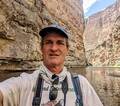
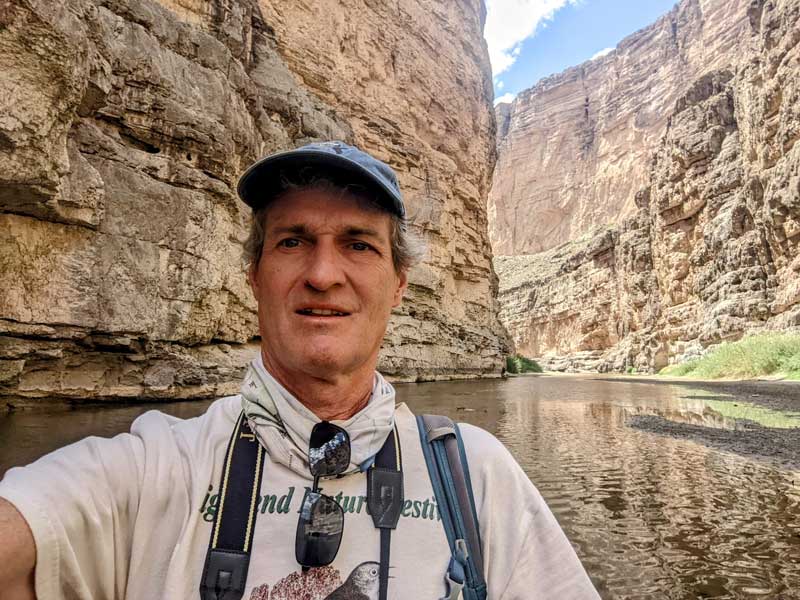
Just exactly how can you master Spanish?
As a native English speaker who became smitten with Spanish, the American journalist Joe Keenan decided that nobody else had written how to break out of beginner’s Spanish, so he would have to do it himself. That’s just how he titled his first book, back in 1995. It became a bestseller, one that continues to sell more than 20 years later, and in an updated edition.
In this exclusive interview, hear some of the author’s best tips for giving your Spanish a turbo boost, plus other tips that apply to learning any language.
Along the way, learn some Mexican Spanish dichos, or sayings crafted from popular wisdom. You’ll also get to know what false cognates are, and how to avoid them on your own journey to intermediate and advanced levels of Spanish.
And you’ll discover how using the correct body language when visiting another country can sometimes be as valuable as knowing the spoken language.
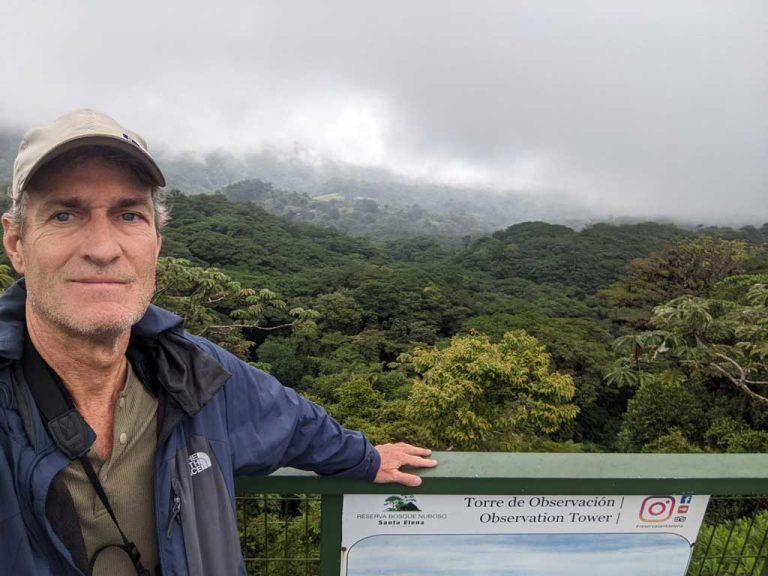
Episode 45: Remembering How To Be Human
From Wyoming Public Radio | Part of the HumaNature series | 14:48
After almost a decade making art in New York City, Stephanie Housley craved being closer to nature, her source of inspiration. So she moved to Bondurant, Wyoming – population 93.
 After almost a decade making art in New York City, Stephanie Housley craved being closer to nature, her source of inspiration. So she moved to Bondurant, Wyoming – population 93.
After almost a decade making art in New York City, Stephanie Housley craved being closer to nature, her source of inspiration. So she moved to Bondurant, Wyoming – population 93.
The Face of Fake News (half)
From With Good Reason | Part of the With Good Reason: Weekly Half Hour Long Episodes series | 29:00
-Fake news wasn't invented by the Internet. It has long been used as a way to demonize political opponents.
-The evolution of White House news management over the two decades from Bill Clinton and cable to Donald Trump and twitter.
- Playing
- The Face of Fake News (half)
- From
- With Good Reason
 Fake news wasn't invented by the Internet. It has long been used as a way to demonize political opponents. Elizabeth Losh says it's important to look at fake news apart from partisan accusations and recognize that there are fake news stories that appeal to both the left and the right. Plus: In his new book, Stephen Farnsworth traces the evolution of White House news management over the two decades from Bill Clinton and cable to Donald Trump and twitter.
Fake news wasn't invented by the Internet. It has long been used as a way to demonize political opponents. Elizabeth Losh says it's important to look at fake news apart from partisan accusations and recognize that there are fake news stories that appeal to both the left and the right. Plus: In his new book, Stephen Farnsworth traces the evolution of White House news management over the two decades from Bill Clinton and cable to Donald Trump and twitter.
Episode 2: How Puerto Ricans are restoring power to the people through Mutual Aid
From Tom Llewellyn | Part of the The Response series | 29:00
After Hurricane Maria devastated Puerto Rico in 2017, a group of activists formed a community kitchen to help feed those in need. That community kitchen has now grown into an island-wide movement to transform Puerto Rico and restore power—both civic and electric—to the people.
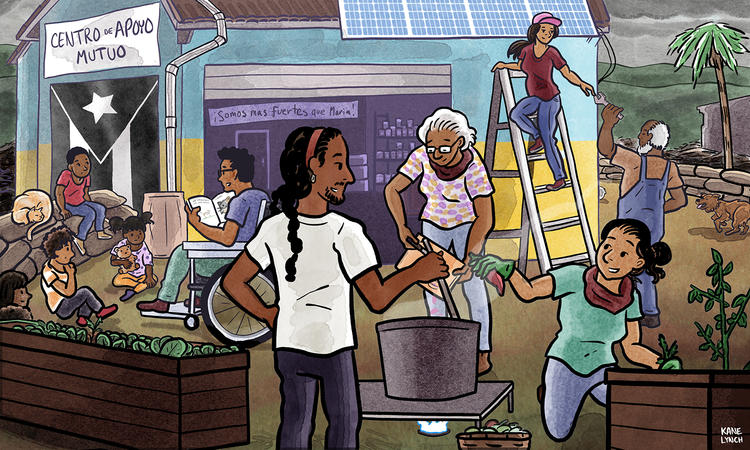
In this second episode of our new radio documentary series The Response, we shine a spotlight on Puerto Rico. When Hurricane Maria slammed into the island about a year ago, it resulted in thousands of deaths and knocked out power for almost an entire year. The result was what many consider to be the worst disaster in the United States.
Further, the devastation wrought by Hurricane Maria exacerbated the ongoing debt crisis that has been crippling the country's public services for years — a crisis that has forced many communities on the island abandon hope that the government will ever come to their assistance. And so when Hurricane Maria hit, it wasn't a surprise to many of these already-abandoned communities when the official response was often nowhere to be seen.
This conversation has been told before by many mainstream news outlets. What you might not have heard, however, is the story of the grassroots response that arose after Maria. In the midst of all the austerity and hurricane-driven chaos, a quiet revolution has been slowly taking place on the island. What began as an impromptu community kitchen meant to help feed survivors in the town of Caguas has since grown into an island-wide network of mutual aid centers with the ultimate aim of restoring power — both electric and civic — to the people. We'll hear from many of those involved in these centers and find out why they are growing so quickly and what they are doing to begin addressing both the acute and chronic disasters that Puerto Ricans are facing today.
For more visit TheResponsePodcast.org
Executive Producer/Host: Tom Llewellyn
Producer/Writer: Robert Raymond
Field Producer: Juan Carlos Dávila
Music: Vladi (feat. Skew.One) and Papel Machete
Home To Roost: 19 Years With Bobby The Bat
From WOUB | 05:01
In 1998 when a large brown bat showed up in their bathroom window, Mimi Hart and Lester Marks could not have predicted the beginning of a 19-year friendship. And yet, every year, the bat, lovingly named Bobby, has loyally returned to that same window.
- Playing
- Home To Roost: 19 Years With Bobby The Bat
- From
- WOUB
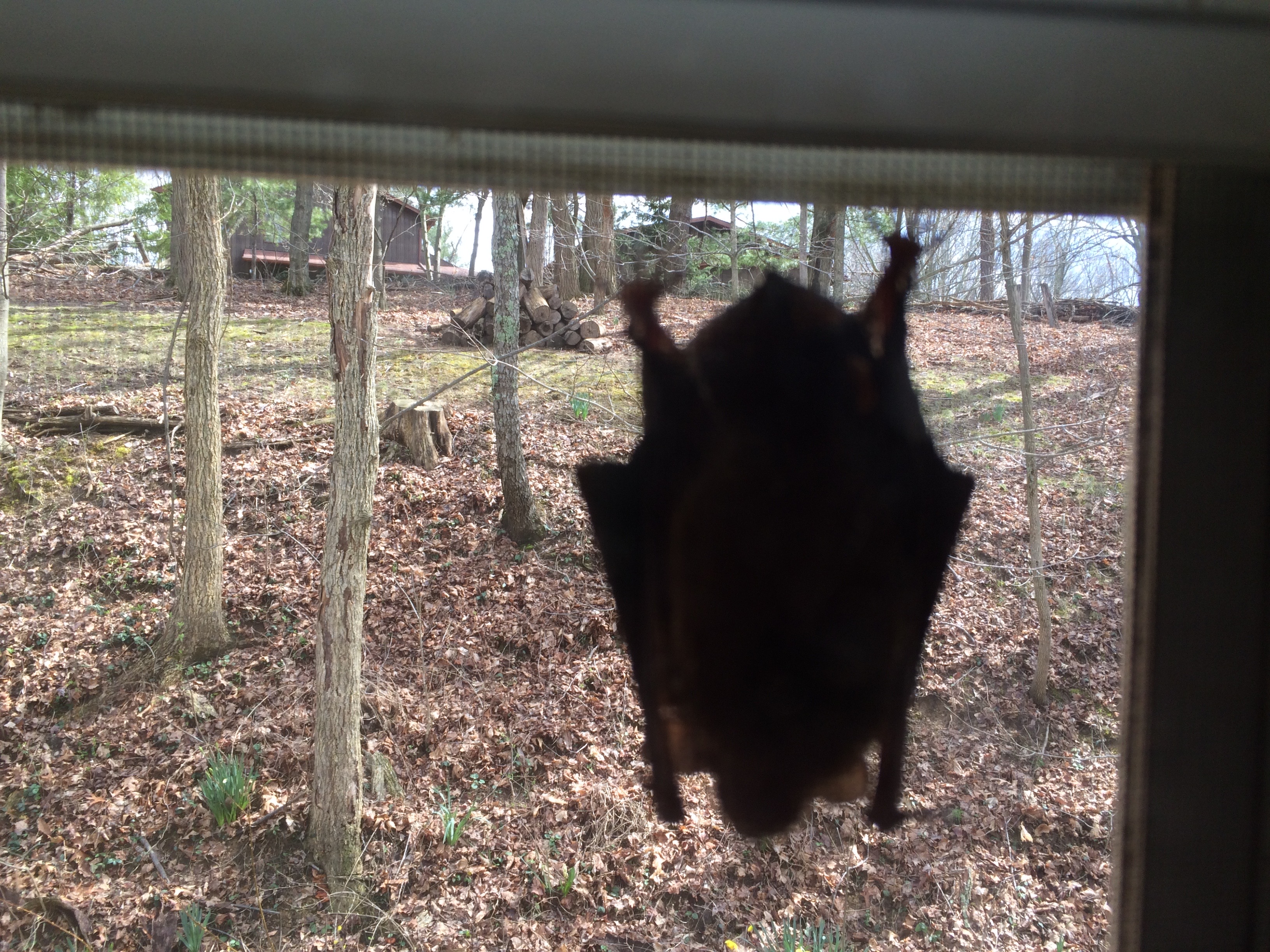
INTRO: Here's a story from reporter Jan Hodson about a family whose houseguest has been hanging around for a long time...
In 1998 when a large brown bat showed up in their bathroom window, Mimi Hart and Lester Marks could not have predicted the beginning of a 19-year friendship. And yet, every year, the bat, lovingly named Bobby, has loyally returned to that same window.
In a way, Bobby has become part of their family. When he visits, they talk to him. Mimi occasionally sings to him. Friends at their dinner parties make the journey upstairs to the bathroom window hoping to see Bobby the Bat. He often hangs out alone in the window but sometimes he’s joined by his bat friends. Lester recalls with mild horror the time when Bobby and six other bats hung out in the window for a day.
Bobby has gained notoriety over the years and now has quite a following. Mimi often posts photos and videos of him on Facebook to assure his adoring public that he has returned and all is right with the world. We share some of those here for you to see.
Mimi has carefully documented Bobby’s comings and goings over the years in a detailed diary she calls The Bobby Report. With glee that comes across even on paper, she has heralded his every arrival. She has recorded visits by his girlfriends, sometimes more than one at a time. And when Bobby departs, she proclaims her love and begs him to return. And so far, Bobby has complied.
Recently, we visited the bathroom window to see Bobby in person. Mimi and Lester introduced him like proud parents. But we wondered. Could this really be the same bat, year after year? Or is this bathroom window just a favorite hangout for lots of bats?
To get some answers, we asked an expert at Ohio University, Dr. Joseph Johnson, who studies the lives of these small mammals. We won’t ruin the surprise by telling you what we learned. You’ll have to listen to the story to find out if this visiting bat has truly been “Bobby” for all these years. You’ll love what Dr. Johnson has to say.
Even though Bobby has returned every year, each departure makes Mimi and Lester wonder whether they’ll see him again. This time they are especially concerned. They will soon put their house on the market as they plan to move closer to town.
Listen as Mimi describes how they are approaching this change in their lives and in Bobby’s. It will warm your heart.
Many people fear bats and find them spooky, but not Mimi and Lester. They will always cherish the warm and enduring friendship they’ve had with this little adopted critter from the wild.
The plant chemicals that shape ecosystems
From KZMU Moab Community Radio | Part of the Science Moab series | 24:17
Plants have many and incredible chemical compounds that they use to survive in our desert. These chemical compounds found in plants can have interactions that structure whole ecosystems. Here we explore the many and incredible ways that chemical compounds work to defend plants and what chemical ecology can teach us about the deserts around us with Dr. Adrienne Godschalx.
 Plants have many and incredible chemical compounds that they use to survive in our desert. These chemical compounds found in plants can have interactions that structure whole ecosystems. Here we explore the many and incredible ways that chemical compounds work to defend plants and what chemical ecology can teach us about the deserts around us with Dr. Adrienne Godschalx.
Plants have many and incredible chemical compounds that they use to survive in our desert. These chemical compounds found in plants can have interactions that structure whole ecosystems. Here we explore the many and incredible ways that chemical compounds work to defend plants and what chemical ecology can teach us about the deserts around us with Dr. Adrienne Godschalx.
Inside the National Recording Registry (Series)
Produced by Devon Strolovitch
Most recent piece in this series:
Gloria Gaynor: I Will Survive
From Devon Strolovitch | Part of the Inside the National Recording Registry series | 06:43
- Playing
- Gloria Gaynor: I Will Survive
- From
- Devon Strolovitch
 Originally released as a B-side, so many deejays began playing Gloria Gaynor's “I Will Survive” that the record company reissued it as a single. It was immediately embraced as an emblem of women’s empowerment and soon became anthem among the LGBT community and survivors of all kinds. Music writer Vince Aletti joins Gaynor herself to tell the story of the recording.
Originally released as a B-side, so many deejays began playing Gloria Gaynor's “I Will Survive” that the record company reissued it as a single. It was immediately embraced as an emblem of women’s empowerment and soon became anthem among the LGBT community and survivors of all kinds. Music writer Vince Aletti joins Gaynor herself to tell the story of the recording.
Whatever Happened to the Ozone Hole?
From Distillations | Part of the Distillations series | 24:10
An environmental success story.
- Playing
- Whatever Happened to the Ozone Hole?
- From
- Distillations

If you were around in the 1980s, you probably remember the lurking fear of an ominous hole in the sky. In the middle of the decade scientists discovered that a giant piece of the ozone layer was disappearing over Antarctica, and the situation threatened us all. The news media jumped on the story. The ozone layer is like the earth’s sunscreen: without it ultraviolet rays from the sun would cause alarming rates of skin cancer and could even damage marine food chains. And it turns out we were causing the problem.
Today, more than three decades after the initial discovery, the ozone hole in Antarctica is finally on the road to recovery. How did we do it? This environmental success story gives us a glimpse into what happens when scientists, industry, the public, and the government all work together to manage a problem that threatens all of us. Happy Earth Day!
Stopping the Gentrification Train
From Wendy Ring | Part of the Cool Solutions series | 28:00
Making neighborhoods sustainable makes them desirable and rising prices push old residents out. Community land trusts in Denver CO and Burlington VT take land in improving neighborhoods into stewardship for permanent affordable housing.
- Playing
- Stopping the Gentrification Train
- From
- Wendy Ring
 Making neighborhoods sustainable also makes them more desirable, and rising property values can push out longtime residents. Its not just a big city problem. Community land trusts help towns of all sizes combat green gentrification by reserving land for permanent affordable housing ahead of planned improvements. We look at transit oriented displacement in Denver CO with Jeff Turrentine and Catherine Cox Blair of the NRDC. Aaron Miripol, executive director of Denver's Urban Land Conservancy explains how urban land trusts work and how they are building affordable housing around new transit stations. Brenda Torpy of the tells the story of the Champlain Housing Trust in Burlington VT which started small and has grown to change many lives. Aaron and Brenda talk about the community value of land and why we need alternatives to the capitalist model of ownership.
Making neighborhoods sustainable also makes them more desirable, and rising property values can push out longtime residents. Its not just a big city problem. Community land trusts help towns of all sizes combat green gentrification by reserving land for permanent affordable housing ahead of planned improvements. We look at transit oriented displacement in Denver CO with Jeff Turrentine and Catherine Cox Blair of the NRDC. Aaron Miripol, executive director of Denver's Urban Land Conservancy explains how urban land trusts work and how they are building affordable housing around new transit stations. Brenda Torpy of the tells the story of the Champlain Housing Trust in Burlington VT which started small and has grown to change many lives. Aaron and Brenda talk about the community value of land and why we need alternatives to the capitalist model of ownership.
Impossible Music, Black MIDI and Beyond
From Andrew Chugg | 18:52
An in-depth exploration of the history and cultural implications of the enigmatic world of Impossible Music and Black MIDI.
- Playing
- Impossible Music, Black MIDI and Beyond
- From
- Andrew Chugg
 An in-depth exploration of the history and cultural implications of Impossible Music and Black MIDI. This audio documentary explores the concepts behind Impossible Music; a genre of music that exists primarily to challenge the specifications of the producers computer.
An in-depth exploration of the history and cultural implications of Impossible Music and Black MIDI. This audio documentary explores the concepts behind Impossible Music; a genre of music that exists primarily to challenge the specifications of the producers computer.
Interviews with curator of Rhizome.org, Michael Connor, composer and writer Robert Barry and others.
Cannabis and craft beer
From Delmarva Public Media | Part of the Beer Notes series | 02:02
The fascination with cannabis continues, and not surprisingly, craft brewers are finding creative ways to infuse this plant into their beers. On this episode of Beer Notes, we're discussing how craft brewers are using derivatives of the marijuana plant.
- Playing
- Cannabis and craft beer
- From
- Delmarva Public Media
 The fascination with cannabis continues, and not surprisingly, craft brewers are finding creative ways to infuse this plant into their beers. On this episode of Beer Notes, we're discussing how craft brewers are using derivatives of the marijuana plant.
The fascination with cannabis continues, and not surprisingly, craft brewers are finding creative ways to infuse this plant into their beers. On this episode of Beer Notes, we're discussing how craft brewers are using derivatives of the marijuana plant.
Cannabis and craft beer
From Delmarva Public Media | Part of the Beer Notes series | 02:02
The fascination with cannabis continues, and not surprisingly, craft brewers are finding creative ways to infuse this plant into their beers. On this episode of Beer Notes, we're discussing how craft brewers are using derivatives of the marijuana plant.
- Playing
- Cannabis and craft beer
- From
- Delmarva Public Media
 The fascination with cannabis continues, and not surprisingly, craft brewers are finding creative ways to infuse this plant into their beers. On this episode of Beer Notes, we're discussing how craft brewers are using derivatives of the marijuana plant.
The fascination with cannabis continues, and not surprisingly, craft brewers are finding creative ways to infuse this plant into their beers. On this episode of Beer Notes, we're discussing how craft brewers are using derivatives of the marijuana plant.
Cannabis and craft beer
From Delmarva Public Media | Part of the Beer Notes series | 02:02
The fascination with cannabis continues, and not surprisingly, craft brewers are finding creative ways to infuse this plant into their beers. On this episode of Beer Notes, we're discussing how craft brewers are using derivatives of the marijuana plant.
- Playing
- Cannabis and craft beer
- From
- Delmarva Public Media
 The fascination with cannabis continues, and not surprisingly, craft brewers are finding creative ways to infuse this plant into their beers. On this episode of Beer Notes, we're discussing how craft brewers are using derivatives of the marijuana plant.
The fascination with cannabis continues, and not surprisingly, craft brewers are finding creative ways to infuse this plant into their beers. On this episode of Beer Notes, we're discussing how craft brewers are using derivatives of the marijuana plant.
Immigrant Voices (Series)
Produced by Media Humboldt
Most recent piece in this series:
Elena
From Media Humboldt | Part of the Immigrant Voices series | 06:39
- Playing
- Elena
- From
- Media Humboldt
 Elena from El Salvador was excited to come to the United States but found her predicament for her and her son difficult. Not knowing any English, she feels isolated and troubled. Her translated testimony is voiced by HSU student Daisy Uribe.
Elena from El Salvador was excited to come to the United States but found her predicament for her and her son difficult. Not knowing any English, she feels isolated and troubled. Her translated testimony is voiced by HSU student Daisy Uribe.
Immigrant Voices (Series)
Produced by Media Humboldt
Most recent piece in this series:
Elena
From Media Humboldt | Part of the Immigrant Voices series | 06:39
- Playing
- Elena
- From
- Media Humboldt
 Elena from El Salvador was excited to come to the United States but found her predicament for her and her son difficult. Not knowing any English, she feels isolated and troubled. Her translated testimony is voiced by HSU student Daisy Uribe.
Elena from El Salvador was excited to come to the United States but found her predicament for her and her son difficult. Not knowing any English, she feels isolated and troubled. Her translated testimony is voiced by HSU student Daisy Uribe.
Disobeying Orders in Afghanistan
From University of Montana Journalism | 07:53
Under fire for more than 10 days, David Evans and a group of soldiers got an unusual call. It was for a medical evacuation. "I asked if it was one of ours or one of theirs. They said neither, it was a civilian, a little girl." An essay written, scored and sound-designed by a soldier who signs off, "No longer in Afghanistan..."
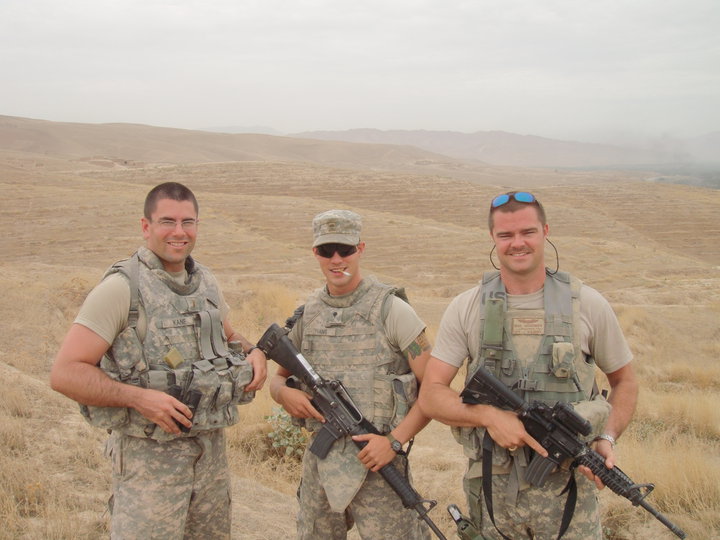 Under fire for more than 10 days, David Evans and a group of soldiers got an unusual call. It was for a medical evacuation. "I asked if it was one of ours or one of theirs. They said neither, it was a civilian, a little girl." An essay written, scored and sound-designed by a soldier who signs off, "No longer in Afghanistan..."
Under fire for more than 10 days, David Evans and a group of soldiers got an unusual call. It was for a medical evacuation. "I asked if it was one of ours or one of theirs. They said neither, it was a civilian, a little girl." An essay written, scored and sound-designed by a soldier who signs off, "No longer in Afghanistan..."
The Army Has A Message For Soldiers: Even Where Marijuana Is Legal, Don't Use It
From American Homefront Project | 04:02
Recreational marijuana use is now legal in ten states, but it remains off-limits to service members ... and some military communities don't want it to be sold anywhere near bases.
 As more states legalize recreational marijuana, there's at least one place where the rules haven't changed: the military. Active service members are strictly forbidden to use marijuana, whether it's recreational or medicinal.
As more states legalize recreational marijuana, there's at least one place where the rules haven't changed: the military. Active service members are strictly forbidden to use marijuana, whether it's recreational or medicinal.
Standing in a rec center at Fort Carson, Col. is a doorframe-sized poster headlined, "The Costs of Marijuana." Through charts and graphics, it lists the Army's perspective on pot's physical costs, social costs and usage trends.
"It emphasizes the fact that marijuana still continues to be the drug of choice in all of our services," said Donna Clouse, prevention services branch chief for the Army's Substance Abuse Program.
Her group created the poster, which is displayed at bases around the country. The poster also includes a color-coded map of the U.S., showing where marijuana is legal recreationally or medically.
Colorado, the home of Fort Carson, is colored white on the map, reflecting the fact that the state legalized recreational marijuana five years ago. But under the map is a large warning for service members: "Marijuana is still considered a Schedule 1 Drug."
"We understand there might be confusion," Clouse said, "especially for individuals who live in the states where marijuana use is legal."
For the military, there's no confusion. It is never okay for soldiers to use marijuana, even in a state where it's been legalized for medical or recreational use.
Some criticize military policy
Not surprisingly, active duty soldiers are wary of talking about any marijuana use. But as legalization has spread, some veterans are getting increasingly vocal, saying it's time to re-examine the policy.
Army veteran Matthew Kahl served two tours in Afghanistan. His second deployment ended after a severe injury to his face, a traumatic brain injury, spinal injuries and post-traumatic stress disorder. It left him taking about 20 different medications.
Kahl moved to Colorado to try marijuana as an alternative and said it largely worked. He started reducing his pills, medication by medication, until he stopped taking any of them. He now runs an organization focused in part on securing the right for veterans to use medical cannabis, and he said it's time to be realistic about active duty soldiers and drug use.
"I know of people who are deployed, and they often come across hash in Afghanistan," Kahl said, referring to the resin of the cannabis plant that has the same psychoactive effect of marijuana.
"They use hash to medicate not just to medicate the horrors, the hardships of war, but to alleviate the boredom," he said.
Local leaders worry about alienating military
The inconsistencies between state laws and military regulations not only can create confusion for service members. It also has led to tension in some military communities in states where marijuana is legal. Those cities rely on the economic stability that nearby military bases bring, but could bring in hefty tax dollars if they welcome marijuana dispensaries to town.
Colorado Springs, Col. is a prime example. Five years after the state's voters legalized recreational marijuana, Colorado Springs remains the largest city in the state that has not yet allowed recreational dispensaries to set up shop.
It's likely no coincidence the city is the home of Fort Carson and several other military bases.
"The last thing we need to do is make recreational marijuana yet another reason why the Defense Department opts to take missions, troops, personnel … and move it somewhere else," said Colorado Springs City Council member-elect Wayne Williams at a recent candidate debate.
Andrew Heaton runs a medical marijuana dispensary in Colorado Springs, which are legal. He said he's heard that other military towns outside Colorado are trying to use their states' prohibition of marijuana as a reason for the Pentagon to consider locating missions there, rather than at Colorado bases.Heaton disputes that having legal marijuana near a base means more soldiers will use the drug. He argued soldiers can go off-base just about anywhere and buy pot on the black market.
"In a community where it's legal, you've got it off the streets for the most part," Heaton said.
There are many who would debate that point; just last December, Colorado Springs busted eight businesses accused of illegally selling marijuana. Aside from that, Heaton pointed out military members undergo random drug tests. If a soldier tests positive, it doesn't matter where the marijuana came from.
"None of them want to get what they call the BCD, the 'big chicken dinner,' which is a bad conduct discharge," he said.
Clouse - the Army substance abuse prevention chief - said as long as marijuana remains illegal federally, it will remain incompatible with both military and civilian services in the Army.
Last year, the Department of Defense released a memo specifically reaffirming its prohibition on marijuana - medical or otherwise.
Clouse said the Army has not seen any significant uptick in marijuana violations in five years that recreational marijuana has been legal in Colorado.
This story was produced by the American Homefront Project, a public media collaboration that reports on American military life and veterans. Funding comes from the Corporation for Public Broadcasting.
The Mother behind Mothers’ Day
From BackStory with the American History Guys | Part of the BackStory with the American History Guys: Favorites series | 06:04
Producer Nate DiMeo tells the story of Anna Jarvis and the history of Mother’s Day.
 Producer Nate DiMeo tells the story of Anna Jarvis and the history of Mother’s Day.
Producer Nate DiMeo tells the story of Anna Jarvis and the history of Mother’s Day.
Start The Mess With Bless
From Ariel Mejia | Part of the ASM Youth Radio Spring 2019 series | 01:01
My name is Blessence Coleman. I am 15 years old. I’m from Minnesota but I live in Chicago. The title of my story is “Start The Mess With Bless”. My story is about me going around interviewing people from my school and program asking them all one question. “What is one thing that you never told your parents?” I made this my story because I wanted to know what are some things that people never told their parents. Everything in the dark always come to the light so why not let it come to the light anonymously.
- Playing
- Start The Mess With Bless
- From
- Ariel Mejia
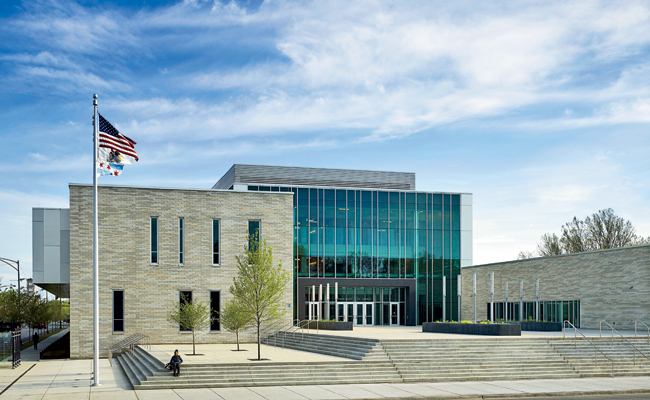
Beyond Infinity
From Laurenellen McCann | Part of the Dimension X! series | 29:01
Somewhere behind the Iron Curtain, Love, Science, and Political Intrigue collide at a subatomic level — with a shrink ray.
- Playing
- Beyond Infinity
- From
- Laurenellen McCann
 CAST
CAST
Announcer – Jermaine Lewis
Arnold/Yan - Thomas McNamara Sisson
Eva Winslor – Sarah Gillig
Doctor Winslor – Gabriel Fries
Allen Winslor - Gus Spelman
Eriksson – Joseph Newman
Commander/Lamarium – Mytheos Holt
Based on the original radio play by Villiers Gerson.
Transcribed, produced, directed, and edited by Laurenellen McCann. Engineer, Nat Webb.
Bill Fontana: Sound & Space
From Cathy Byrd | Part of the Fresh Art International series | 13:37
Artist Bill Fontana has a long-time relationship with sound and space. He's known for relocating sounds to create site-specific installations around the world.
- Playing
- Bill Fontana: Sound & Space
- From
- Cathy Byrd

Artist Bill Fontana has a long-time relationship with sound and space. He's known for relocating sounds to create site-specific installations around the world.
Fontana describes his practice as "composition by listening." In this episode, we talk about what has inspired and informed his public art projects through the decades—from his 1981 Landscape Sculpture with Foghorns in San Francisco, to his 2018 Sonic Dreamscapes in Miami Beach.
Sound Editor: Anamnesis Audio | Special Audio: Bill Fontana
Related episodes: Inside Miami's Sound Chamber; Stephen Vitiello on Sound Art
Related links: Bill Fontana, City of Miami Beach Art in Public Places
Real. Live. Cowboys
From Kinsee Morlan | Part of the This Small Town Life series | 20:47
Two ranchers talk about what it's like living life as a cowboy.
- Playing
- Real. Live. Cowboys
- From
- Kinsee Morlan

Cowboy Dave runs cattle in La Plata County, Colorado. He can't imagine doing much else. Playing with cows and being in the mountains is what he prefers.
Parenting on the Spectrum (Half)
From With Good Reason | Part of the With Good Reason: Weekly Half Hour Long Episodes series | 28:58
Autistic people and their families are coming up with new ways to understand autism’s unique gifts and challenges.
- Playing
- Parenting on the Spectrum (Half)
- From
- With Good Reason
 Autistic people and their families are coming up with new ways to understand autism’s unique gifts and challenges.
Autistic people and their families are coming up with new ways to understand autism’s unique gifts and challenges.
Reno Gleaning Project harvests tons of fruit from neighborhood trees in an effort to change local food culture
From Brian Bahouth | 21:04
Pamela Mayne is founder of the Reno Gleaning Project. At this time of year her volunteers are busy picking literally tons of fruit from local trees, but for Mayne, her nonprofit is not to be confused with a yard cleanup service. The hand-sorted local fruits are distributed through the Food Bank of Northern Nevada and other pantries. She brings a personal and spirited dedication to the notion of food as medicine for individuals and society. Mayne says that access to local, high-quality food is a key to breaking the cycle of food insecurity, poverty and sickness. On this edition of the Wild Hare podcast, we speak with Pamela Mayne about the essential qualities of the regional diet of northern Nevada.
 Pamela Mayne is founder of the Reno Gleaning Project. At this time of year her volunteers are busy picking literally tons of fruit from local trees, but for Mayne, her nonprofit is not to be confused with a yard cleanup service. The hand-sorted local fruits are distributed through the Food Bank of Northern Nevada and other pantries. She brings a personal and spirited dedication to the notion of food as medicine for individuals and society. Mayne says that access to local, high-quality food is a key to breaking the cycle of food insecurity, poverty and sickness. On this edition of the Wild Hare podcast, we speak with Pamela Mayne about the essential qualities of the regional diet of northern Nevada.
Pamela Mayne is founder of the Reno Gleaning Project. At this time of year her volunteers are busy picking literally tons of fruit from local trees, but for Mayne, her nonprofit is not to be confused with a yard cleanup service. The hand-sorted local fruits are distributed through the Food Bank of Northern Nevada and other pantries. She brings a personal and spirited dedication to the notion of food as medicine for individuals and society. Mayne says that access to local, high-quality food is a key to breaking the cycle of food insecurity, poverty and sickness. On this edition of the Wild Hare podcast, we speak with Pamela Mayne about the essential qualities of the regional diet of northern Nevada.
Ep 1: Fighting the opioid epidemic with Suboxone and telemedicine
From Anna Boiko-Weyrauch | Part of the Finding Fixes Season One series | 25:34
At a clinic in Everett, Washington, a nurse pushes his patients to work hard, and the patients embark on their road to recovery. This episode we're looking evidence-based medication and expanding access to treatment through telemedicine.
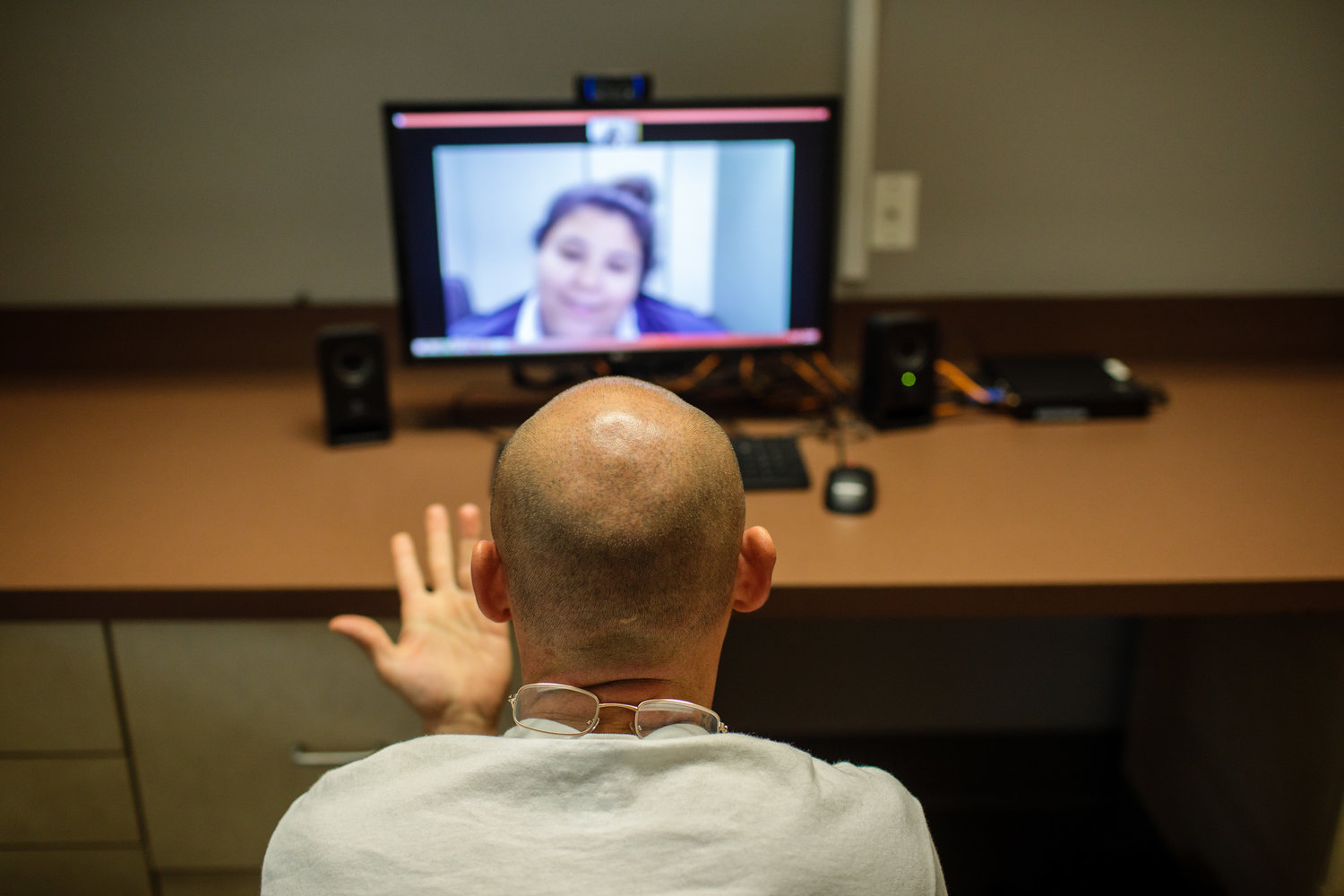
SOLUTION:
Treat addiction using evidence-based medication, like buprenorphine (aka Suboxone). Expand access to treatment through telemedicine.
STORY:
At a clinic in Everett, Washington, a nurse pushes his patients to work hard, and the patients embark on their road to recovery. Do they have a chance? (Yes, and we’ll tell you why.)
This season we’re in Snohomish County, Washington which has an oversized share of overdose deaths in the state and is now treating the opioid epidemic like a natural disaster.
LINKS TO MORE INFORMATION AND RESOURCES:
Snohomish County overdose and addiction treatment resource guide.
Overview of the evidence for medication-assisted treatment (MAT) for opioid use disorders, by the Alcohol and Drug Abuse Institute of the University of Washington.
Research: Buprenorphine is an effective medication that can retain people in treatment.
Research: Patients on buprenorphine were 30 percent more likely to avoid a relapse and 50 percent more likely to stay alive than patients in drug treatment without medication.
Research: Four years after starting Suboxone, over 60% of patients were not using illegal drugs.
Airborne Hero
From Kathleen Polanco | 08:01
A paratrooper in the 82nd Airborne Division, one of the most highly decorated divisions in the U.S. Army, didn’t understand what it meant to be airborne, until she experienced a humbling opportunity that will soon become non-existent for future generations of soldiers.
- Playing
- Airborne Hero
- From
- Kathleen Polanco
 During her service in the 82nd Airborne Division, Sgt. Kathleen Polanco despised her duty to jump out of a perfectly good airplane. It wasn’t something she fully understood nor carried with a sense of pride, until she felt the impacts of the Invasion of Normandy.
During her service in the 82nd Airborne Division, Sgt. Kathleen Polanco despised her duty to jump out of a perfectly good airplane. It wasn’t something she fully understood nor carried with a sense of pride, until she felt the impacts of the Invasion of Normandy.
Reflecting on an IED
From Levingston Lewis | 06:58
“Getting blown up was one of the best things that has ever happened to me.”
- Playing
- Reflecting on an IED
- From
- Levingston Lewis

Messages From a Forgotten Troopship (Half Hour Version)
From With Good Reason | Part of the With Good Reason: Weekly Half Hour Long Episodes series | 26:24
In the 1960s, it took almost three weeks to cross the sea from America to Vietnam. Three weeks for young men in crowded cabins, with salt water showers and absolutely nothing to do but think: about home, about the war, and about what’s next.
 In the 1960s, it took almost three weeks to cross the sea from America to Vietnam. Three weeks for young men in crowded cabins, with salt water showers and absolutely nothing to do but think: about home, about the war, and about what’s next. For some, it was a roundtrip journey; others never made it home. This documentary shares three stories from and about soldiers who travelled on a single troopship, the General Nelson M. Walker. Through found tape and contemporary interviews, we recreate the troopship and capture the moments outside of combat—three weeks there, and for the lucky ones, three weeks back. Our first story: tanning oil, hillbilly radio, and a typhoon, or—what soldiers write Mom about. Second: a love letter from Vietnam, recorded on reel-to-reel tape. And third: going home again—reflections from a veteran, just months before he died. We’re calling these: Messages From a Forgotten Troopship.
In the 1960s, it took almost three weeks to cross the sea from America to Vietnam. Three weeks for young men in crowded cabins, with salt water showers and absolutely nothing to do but think: about home, about the war, and about what’s next. For some, it was a roundtrip journey; others never made it home. This documentary shares three stories from and about soldiers who travelled on a single troopship, the General Nelson M. Walker. Through found tape and contemporary interviews, we recreate the troopship and capture the moments outside of combat—three weeks there, and for the lucky ones, three weeks back. Our first story: tanning oil, hillbilly radio, and a typhoon, or—what soldiers write Mom about. Second: a love letter from Vietnam, recorded on reel-to-reel tape. And third: going home again—reflections from a veteran, just months before he died. We’re calling these: Messages From a Forgotten Troopship.
Voices of Vietnam: A Lost Homeland (half)
From With Good Reason | Part of the WGR Special Series series | 28:59
The Fall of Saigon marked the loss of a homeland for hundreds of thousands of Vietnamese people. This captivating NEH-funded documentary shares stories of the chaotic withdrawal of U.S. troops, along with heroic rescues and harrowing escapes of Vietnamese citizens who struggled to make new lives in the U.S.
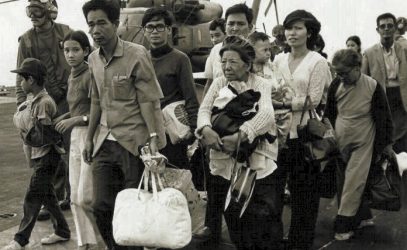
The Fall of Saigon marked the bitter end of the American War in Vietnam and the loss of a homeland for hundreds of thousands of Vietnamese people. We share stories of the chaotic withdrawal of U.S. troops, along with heroic rescues and harrowing escapes of Vietnamese citizens. Then we take a glimpse into post-war life under communist rule in Vietnam.
Lincoln and Humor
From NPR Illinois | 29:00
How Abraham Lincoln discovered humor and how jokes and tall tales helped him to make a point.
- Playing
- Lincoln and Humor
- From
- NPR Illinois

Depaving Portland
From Wendy Ring | Part of the Cool Solutions series | 28:00
Citizens wielding pry bars and thermometers turn parking lots into rain gardens and change city policy to favor green over grey.
- Playing
- Depaving Portland
- From
- Wendy Ring
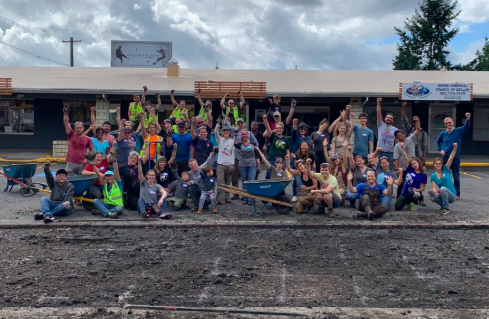 In the face of rising temperatures and heavier rain, citizens wielding pry bars and thermometers turn parking lots into rain gardens and change city building standards to favor green space over asphalt.
In the face of rising temperatures and heavier rain, citizens wielding pry bars and thermometers turn parking lots into rain gardens and change city building standards to favor green space over asphalt.
The lower income east side of Portland is the hottest part of town. Citizen action is making it cooler. We follow DePave Portland on one of their projects as they pry up asphalt and install a rain garden on 122nd Street.
Then a story about citizen heat mapping and how temperatures collected by volunteers led to cooler building standards in East Portland.
Storytellers:
Katya Reyna DePave Portland
Sven Gatchev Community Investment Trust
Mustafah Finney South Portland resident
Vivek Shandas Portland State University
Bill Cunningham Better Housing Portland
Portion Of The Break-Up Project
From Megan Hall | 02:46
A portion of a live mix of Providence break-up stories.
- Playing
- Portion Of The Break-Up Project
- From
- Megan Hall

On February 14th, Valentine's Day, the Stairwell Gallery hosted the premiere of the audio documentary "The Breakup Project: Tales of Woe, Wonder, and Other Psycho Pop." The project began over a winter dinner when producers and friends Megan Hall and Sue Ellen Kroll commiserated about their own recent breakups- laughing about the difficulty of navigating social circles and small town rumor mills. The joke grew into a full hour-long audio presentation featuring the break up stories of over 20 Providence residents and live music mixing by Tom Van Buskirk.
Episode 62: Lost Bearings
From Wyoming Public Radio | Part of the HumaNature series | 16:29
Curt Meyer was looking for adventure, so he took a job aboard a Japanese fishing trawler on the Bering Sea. But when a storm hit, the lack of a shared language kept him in the dark as things turned deadly.
- Playing
- Episode 62: Lost Bearings
- From
- Wyoming Public Radio
 Curt Meyer was looking for adventure, so he took a job aboard a Japanese fishing trawler on the Bering Sea. But when a storm hit, the lack of a shared language kept him in the dark as things turned deadly.
Curt Meyer was looking for adventure, so he took a job aboard a Japanese fishing trawler on the Bering Sea. But when a storm hit, the lack of a shared language kept him in the dark as things turned deadly.
The Modern West (Series)
Produced by Wyoming Public Radio
Most recent piece in this series:
The Modern West: Ghost Town(ing) Broadcast Special
From Wyoming Public Radio | Part of the The Modern West series | 57:41
 Ghost towns are an icon of the American West. But they’re not just part of a sepia-toned past; ghost towns in the making today as rural communities shrink. In this special, host Melodie Edwards takes listeners to her hometown of Walden, Colo., where schools and businesses are closing fast. And she visits an old silver mining town to see what it might teach Walden about weathering a boom and bust economy.
Ghost towns are an icon of the American West. But they’re not just part of a sepia-toned past; ghost towns in the making today as rural communities shrink. In this special, host Melodie Edwards takes listeners to her hometown of Walden, Colo., where schools and businesses are closing fast. And she visits an old silver mining town to see what it might teach Walden about weathering a boom and bust economy.
#47 - The Vietnam Tapes of Lance Corporal Michael A. Baronowski
From HowSound | 23:17
A tip for figuring out your top ten radio documentaries: Start with The Vietnam Tapes of Lance Corporal Michael A. Baronowski by Christina Egloff with Jay Allison.

It's ridiculous to even try to make a Top 10 List of favorite radio documentaries. I think my head might snap back like a Pez dispenser if I tried - there are too many good ones to pick from. But, regardless of the challenge, I know for certain the piece featured on this HowSound would make the list.
"The Vietnam Tapes of Lance Corporal Michael A. Baronowski" includes live field recordings from the war that are incredibly honest, genuine, unrehearsed, visceral, funny, devastating.... In short, they're remarkable.
The story was produced in 2000 by Christina Egloff with Jay Allison as part of the Lost and Found Sound series. It received a Gold award from the Third Coast International Audio Festival . And, despite the fact that "The Vietnam Tapes..." is thirteen years old now, the staff at PRX tells me stations still acquire this piece to air around Memorial Day -- as well they should.
Please put aside what you're doing and make time to listen deliberately.
Cheers, Rob
PS - Two of my fav Lost and Found Sound stories are Tony Schwartz: 30,000 Recordings Later by the Kitchen Sisters and Listening to the Northern Lights by Barrett Golding .
Outdoor Ethics
From KZMU Moab Community Radio | Part of the Science Moab series | 23:32
“Leave No Trace” is not a new concept for most outdoor enthusiasts but the LNT recommendations for engaging with the outdoors are always updating as new learnings evolve. We talk with Ben Lawhon, the head of LNT’s research team about the science behind the curriculum of LNT. For this episode, we’ve partnered with the Leave No Trace Center for Outdoor Ethics in advance of the upcoming Arches Leave No Trace Hotspot Sep 24-27th. An event that is working to help address the mountain recreation problems in Arches National Park.
- Playing
- Outdoor Ethics
- From
- KZMU Moab Community Radio
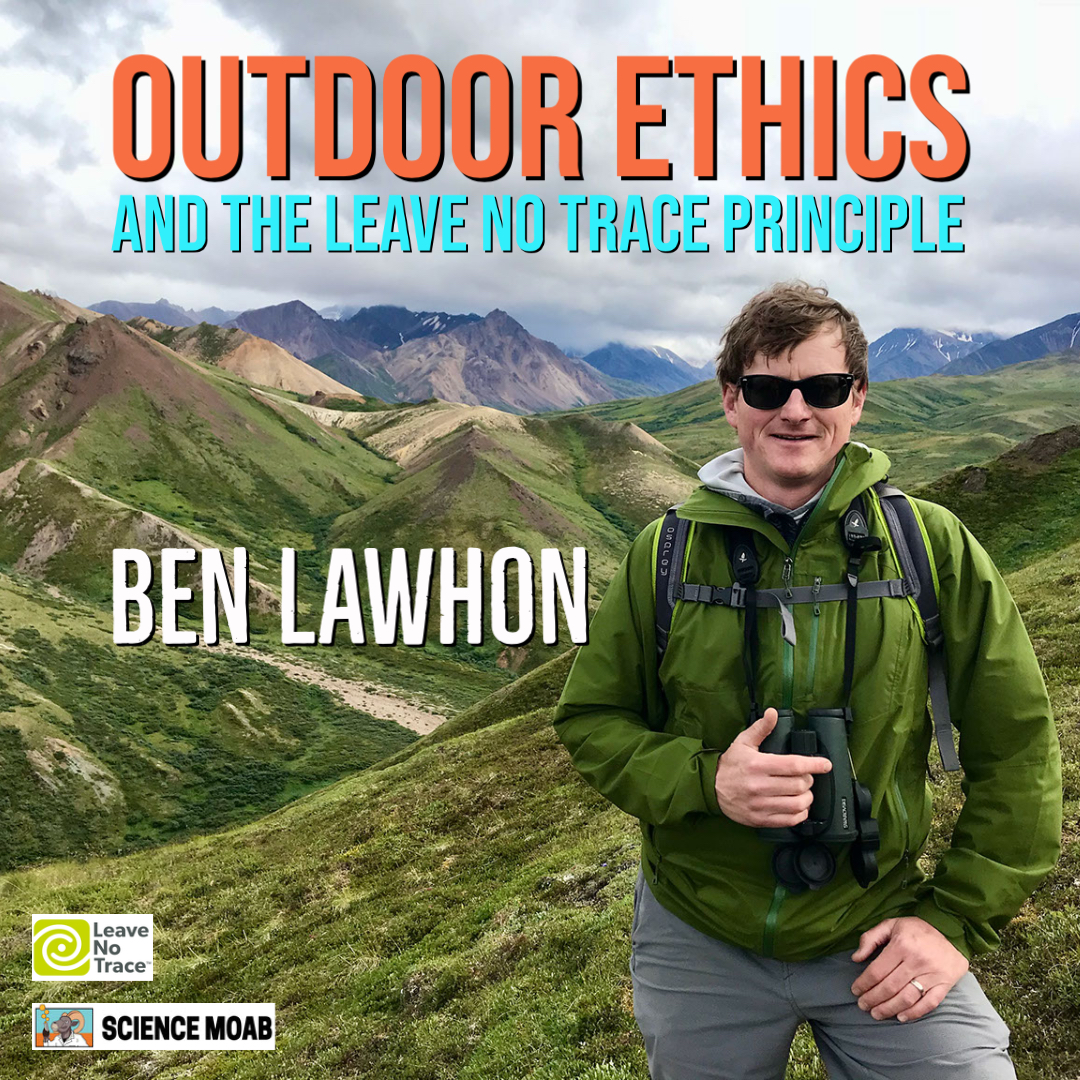 “Leave No Trace” is not a new concept for most outdoor enthusiasts but the LNT recommendations for engaging with the outdoors are always updating as new learnings evolve. We talk with Ben Lawhon, the head of LNT’s research team about the science behind the curriculum of LNT. For this episode, we’ve partnered with the Leave No Trace Center for Outdoor Ethics in advance of the upcoming Arches Leave No Trace Hotspot Sep 24-27th. An event that is working to help address the mountain recreation problems in Arches National Park.
“Leave No Trace” is not a new concept for most outdoor enthusiasts but the LNT recommendations for engaging with the outdoors are always updating as new learnings evolve. We talk with Ben Lawhon, the head of LNT’s research team about the science behind the curriculum of LNT. For this episode, we’ve partnered with the Leave No Trace Center for Outdoor Ethics in advance of the upcoming Arches Leave No Trace Hotspot Sep 24-27th. An event that is working to help address the mountain recreation problems in Arches National Park.
The Facts Behind the COVID-19 Delta Variant
From After the Fact | 21:50
The battle against the COVID-19 virus seemed almost won, but the delta variant is now responsible for a new surge of cases. In this episode, we turn again to infectious disease physician Dr. Rebecca Wurtz to learn more about this new variant and what it means for both vaccinated and unvaccinated populations.

Stat: 93%—93% of new COVID-19 cases were caused by the delta variant in the United States by the end of July 2021.
Story: The battle against the COVID-19 virus seemed almost won, but the delta variant is now responsible for a new surge of cases. In this episode, we turn again to infectious disease physician Dr. Rebecca Wurtz to learn more about this new variant and what it means for both vaccinated and unvaccinated populations.
